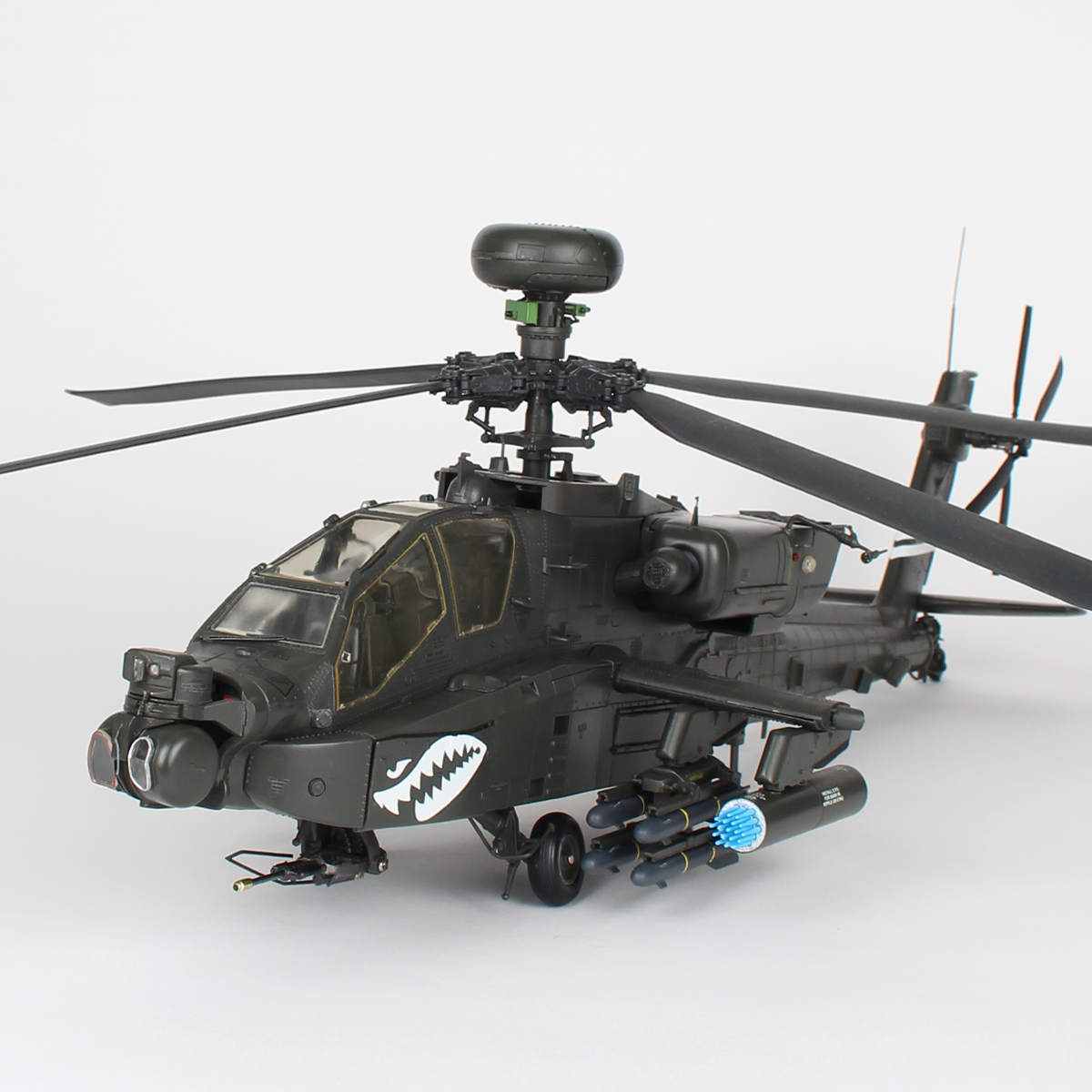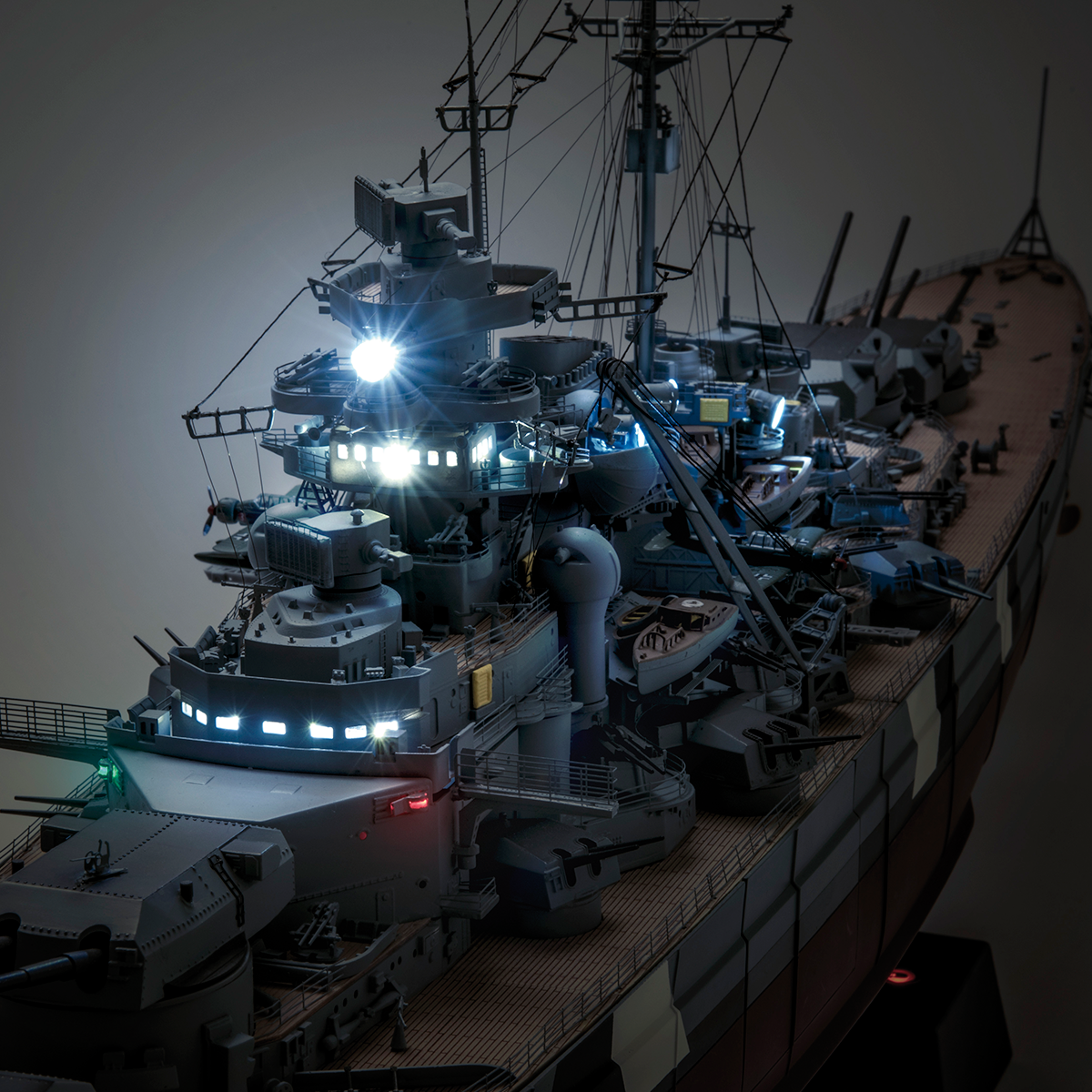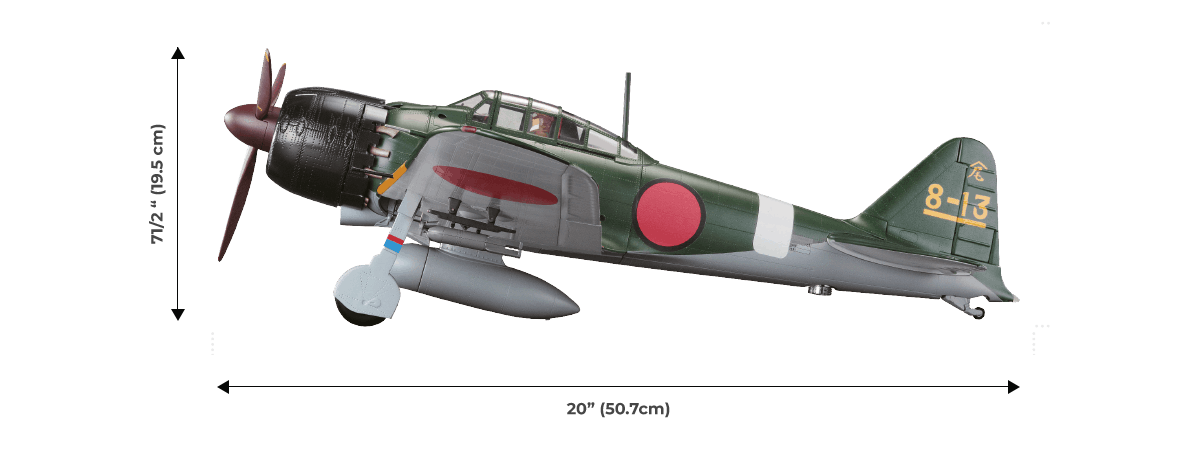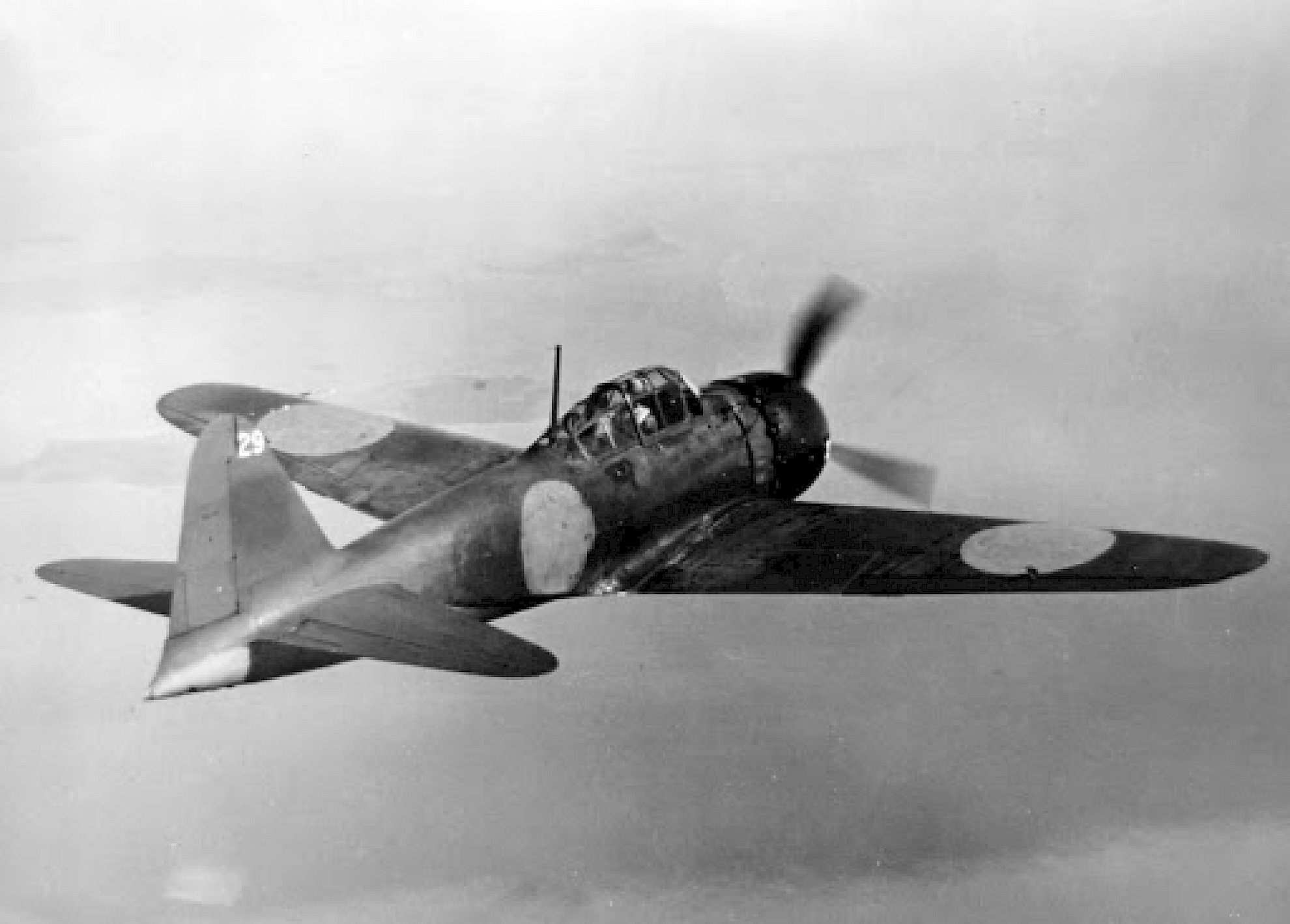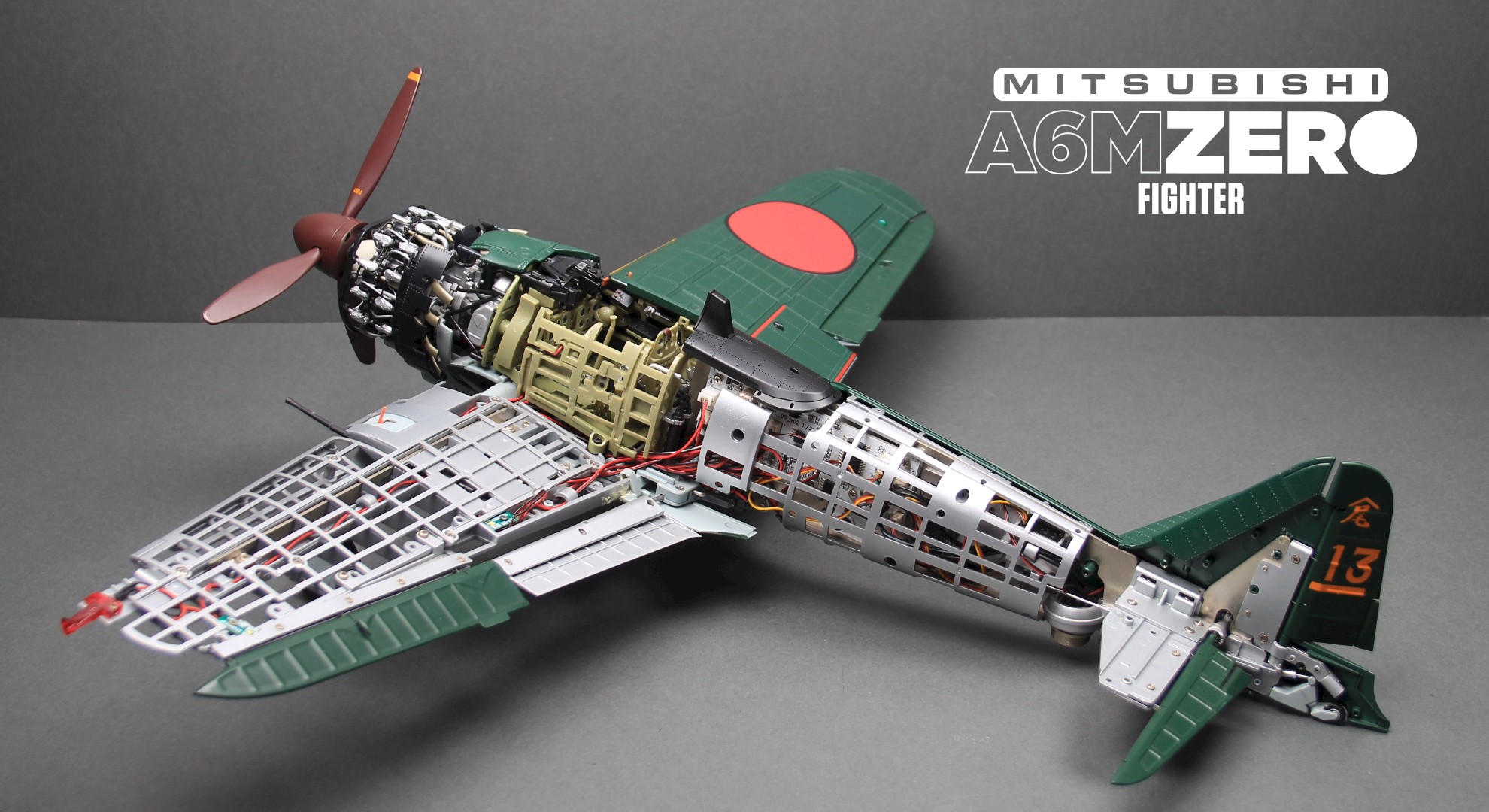
A6M5 ZERO FIGHTER
Agora Models is delighted to bring a 1:18 scale model of the iconic Japanese Zero Fighter Plane to modelling fans – anywhere in the world!
Your 1:18 model of the Japanese Zero is reproduced in the most exquisite detail, with electronics allowing you to recreate aeronautical operations such as take off and landing, turning, firing and night combat. Lights, machine-gun and propeller sounds bring your legendary fighter plane to life.
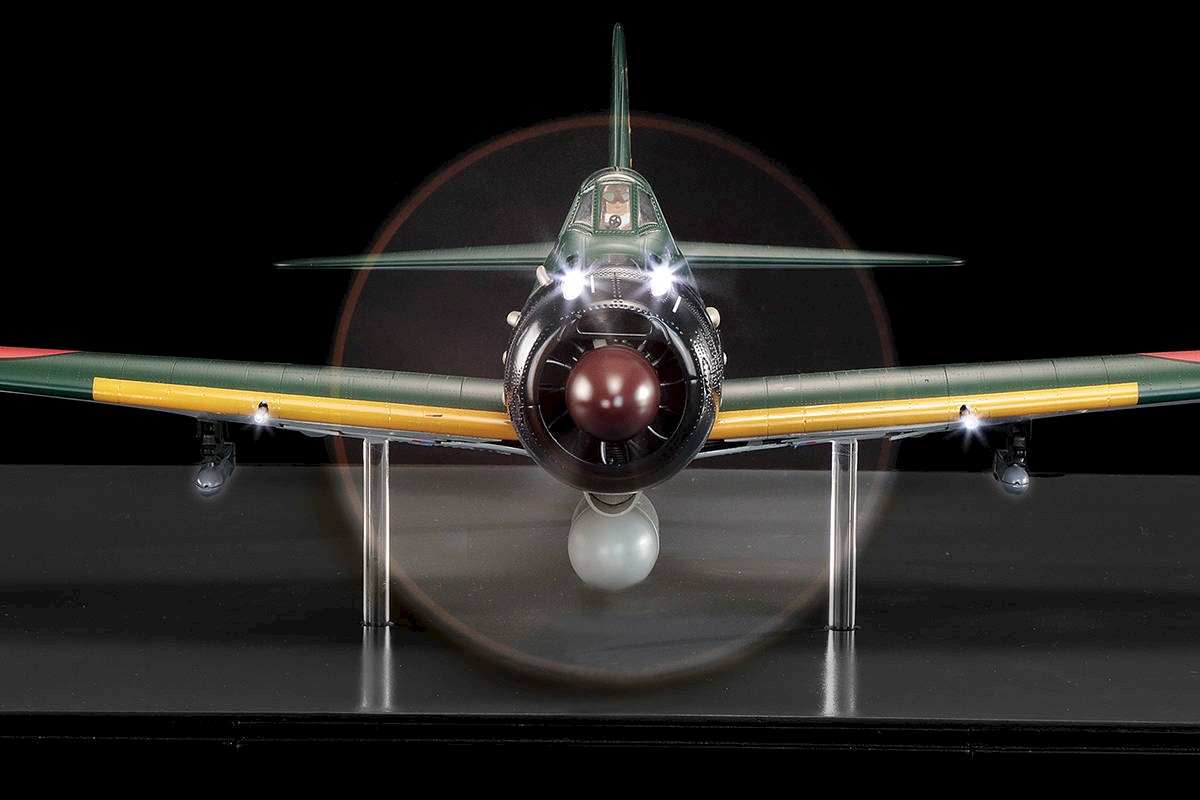
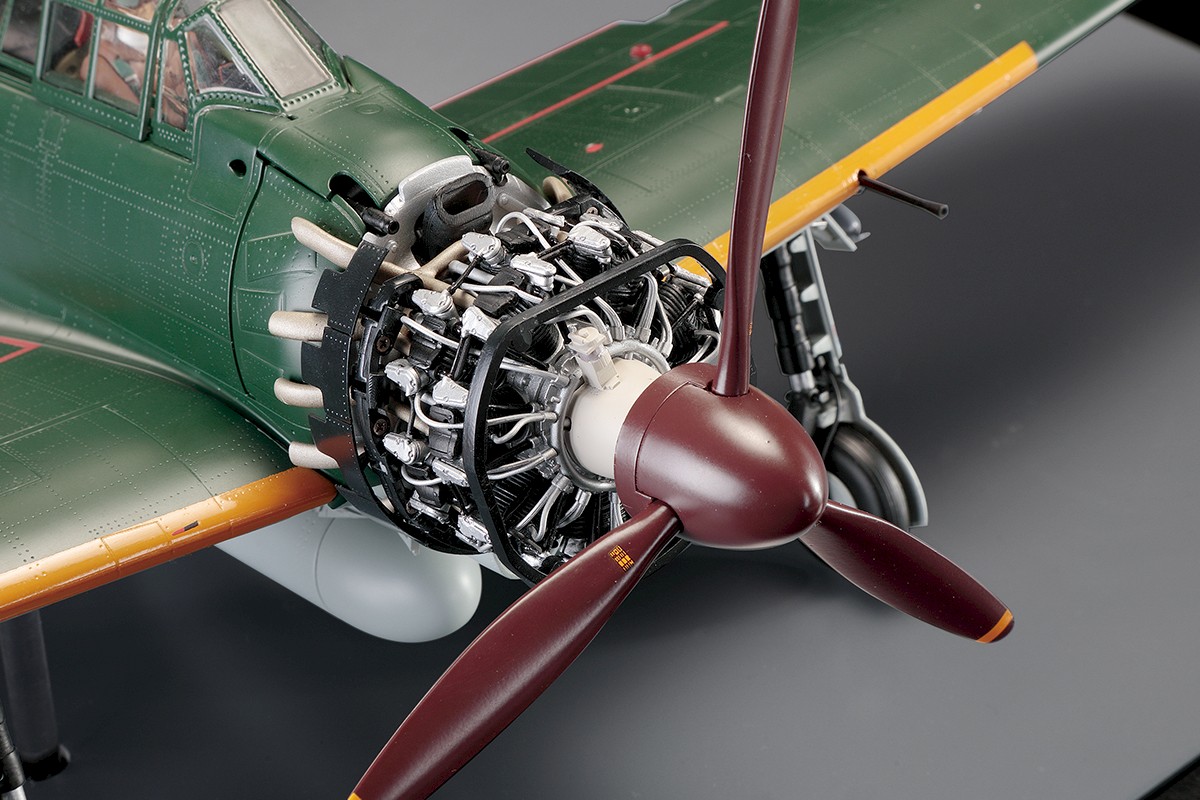
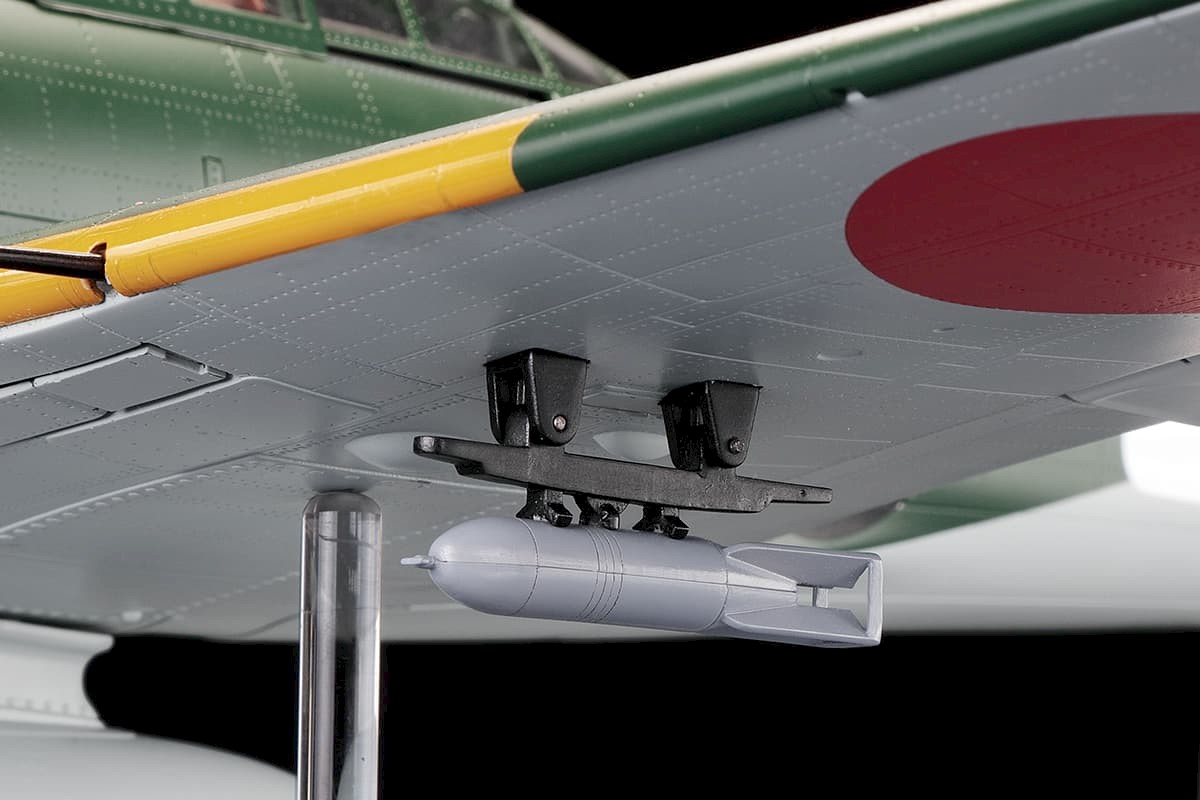
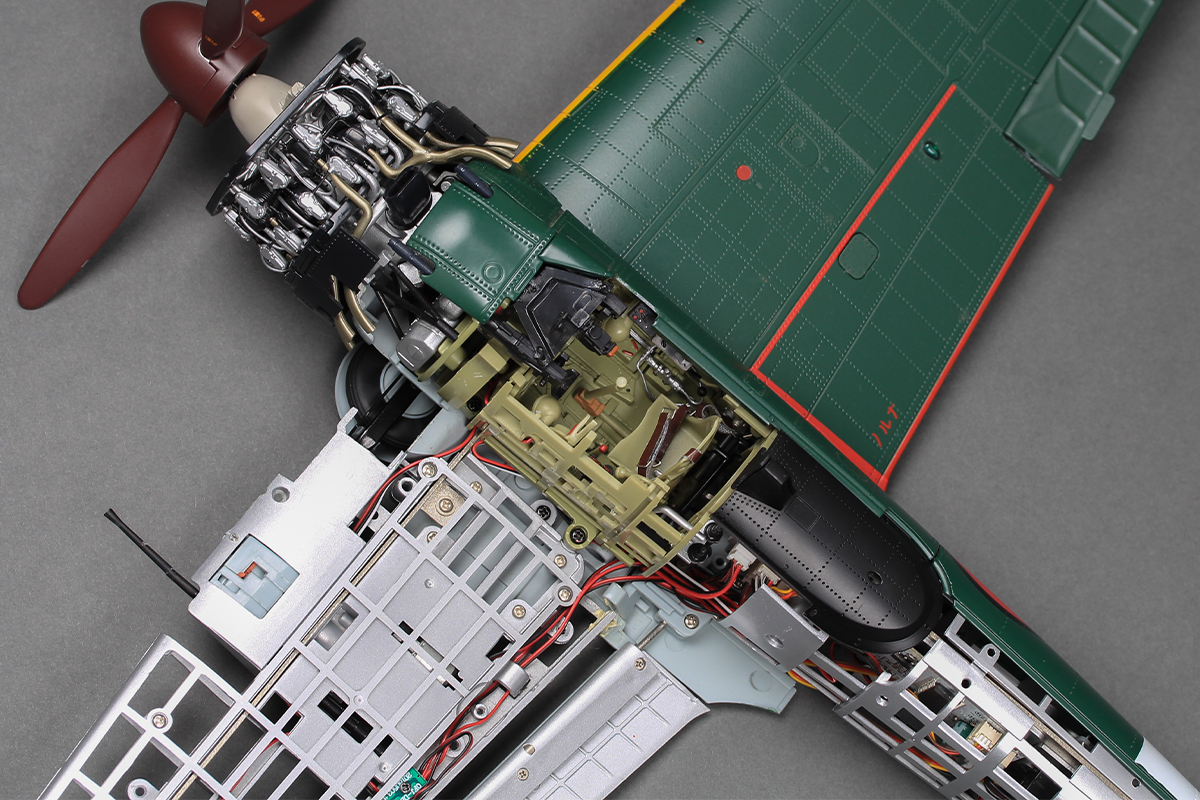
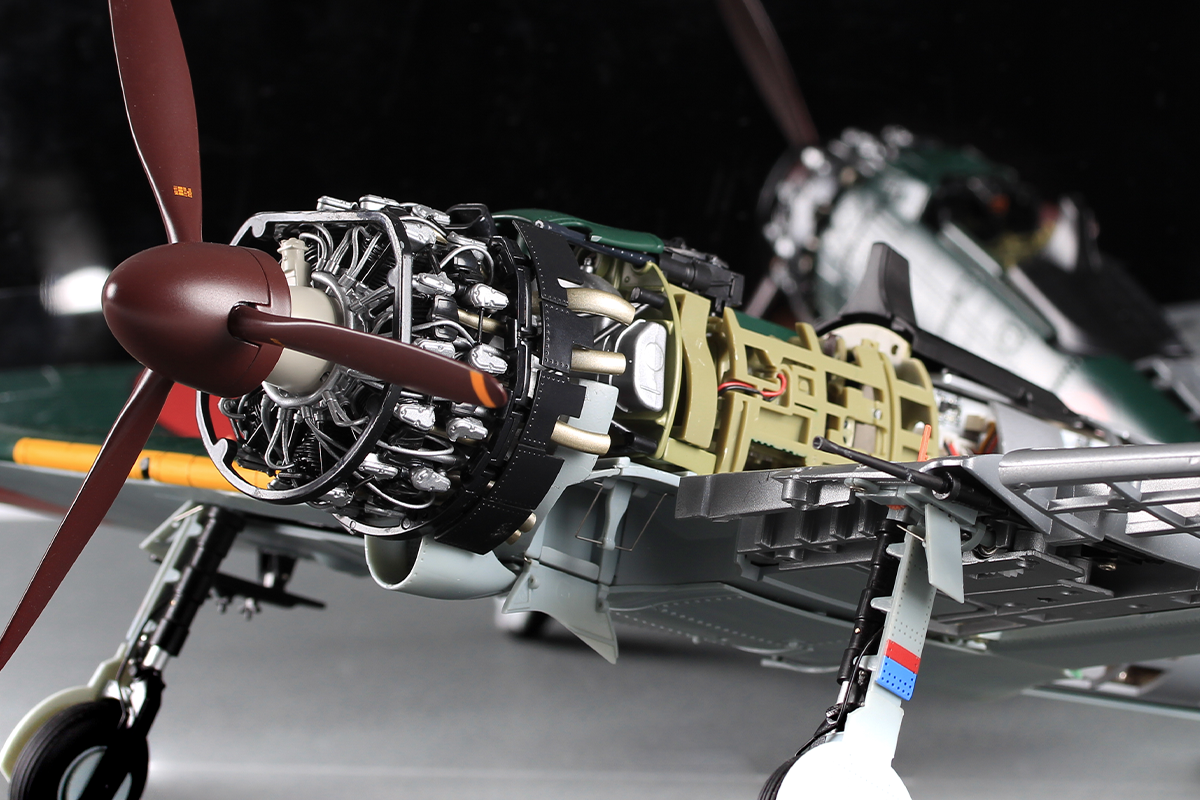
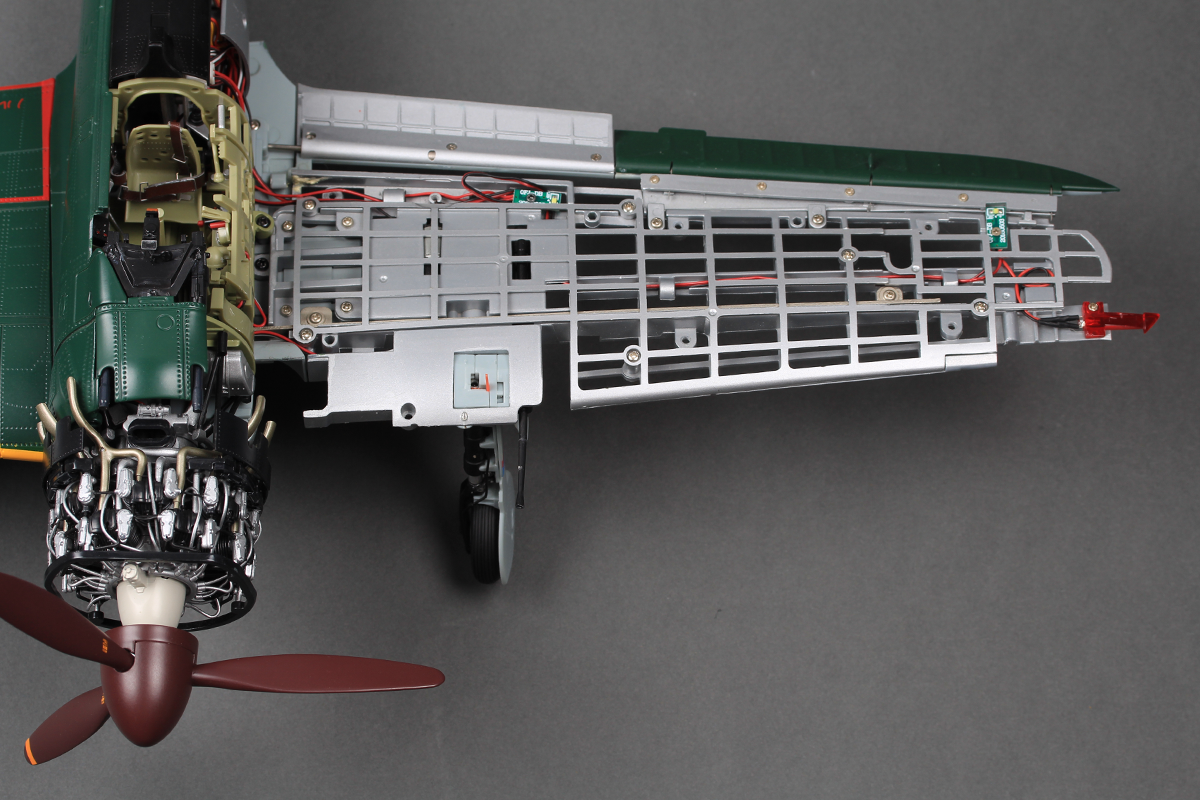
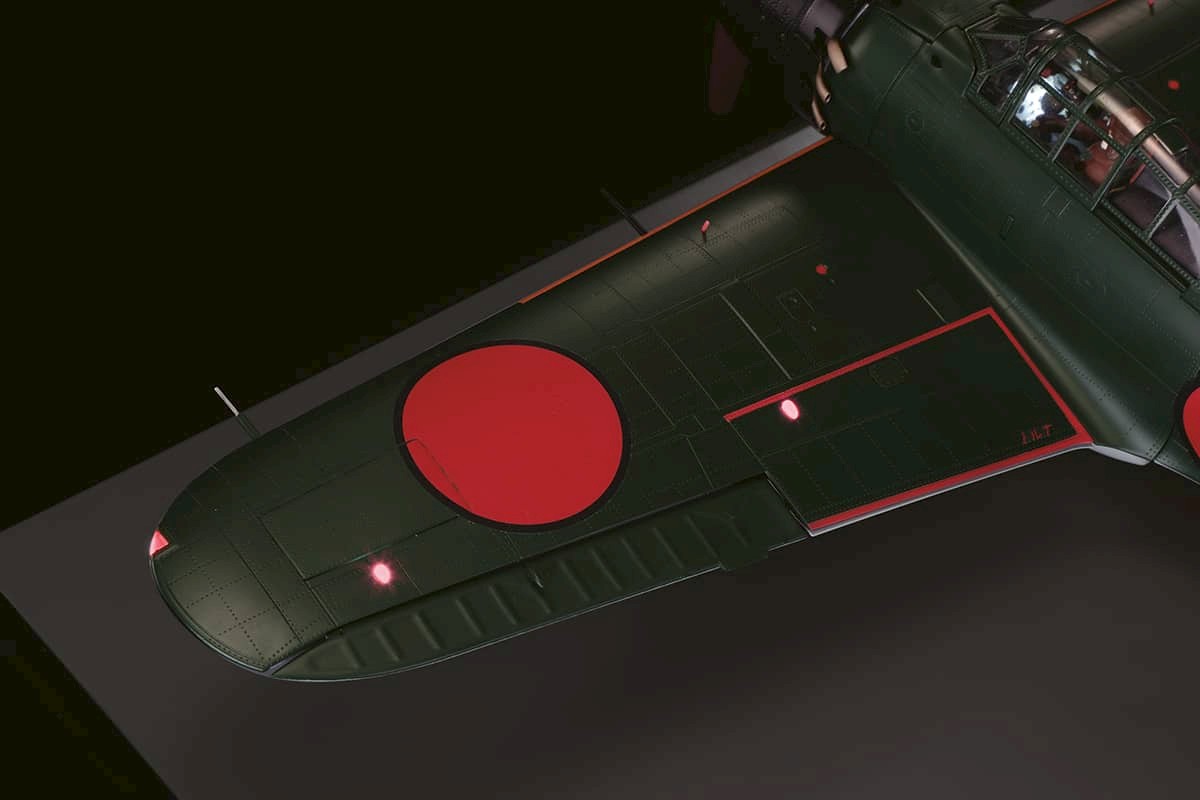
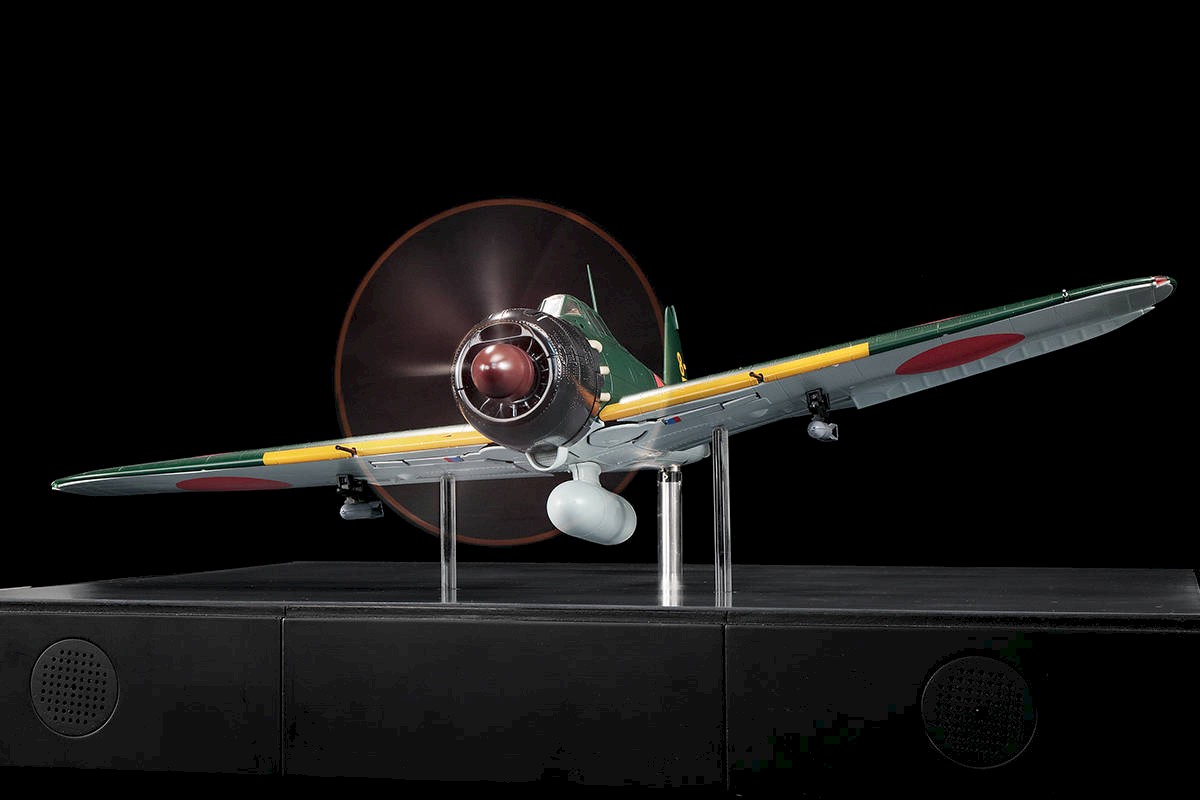
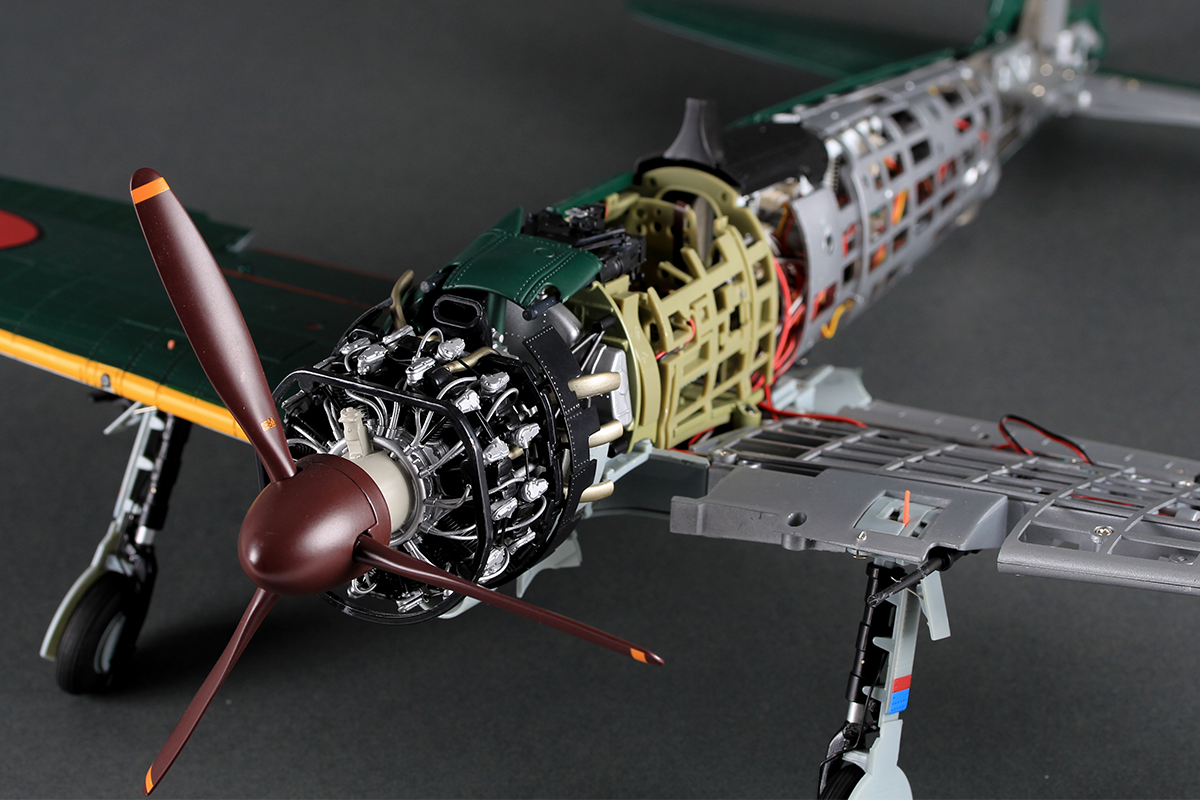
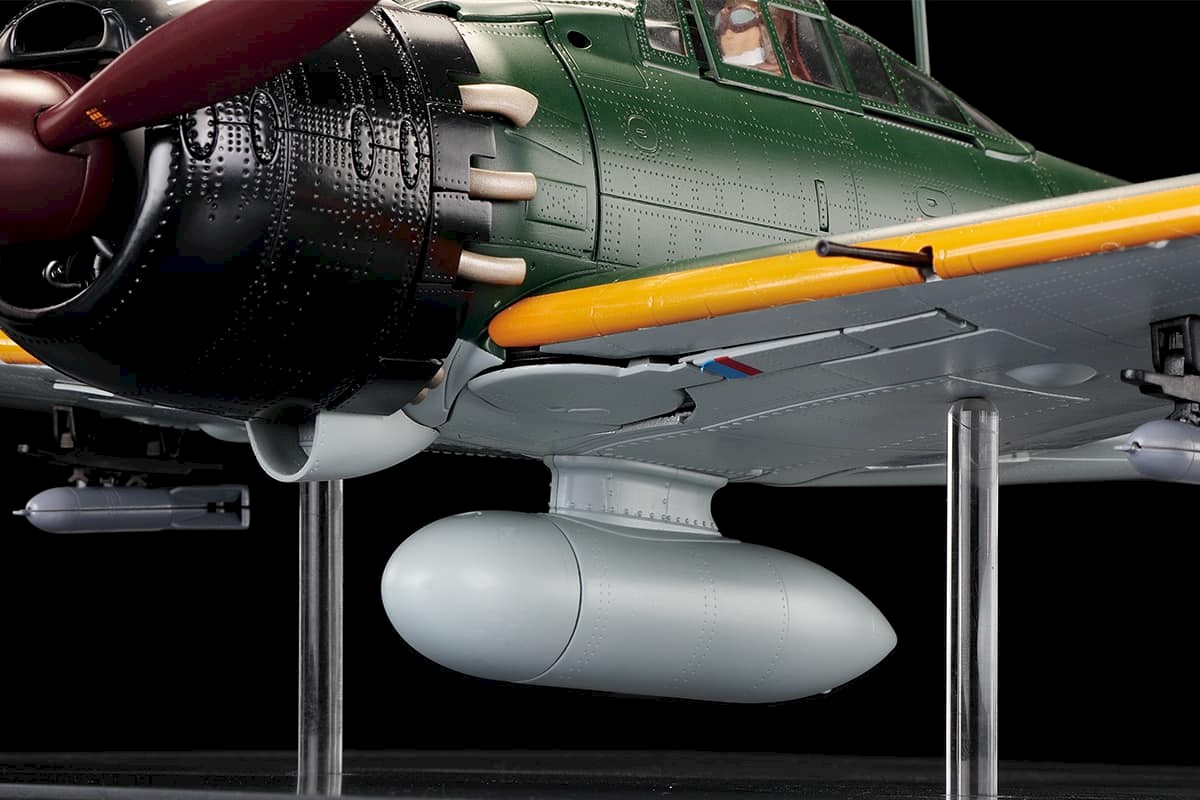
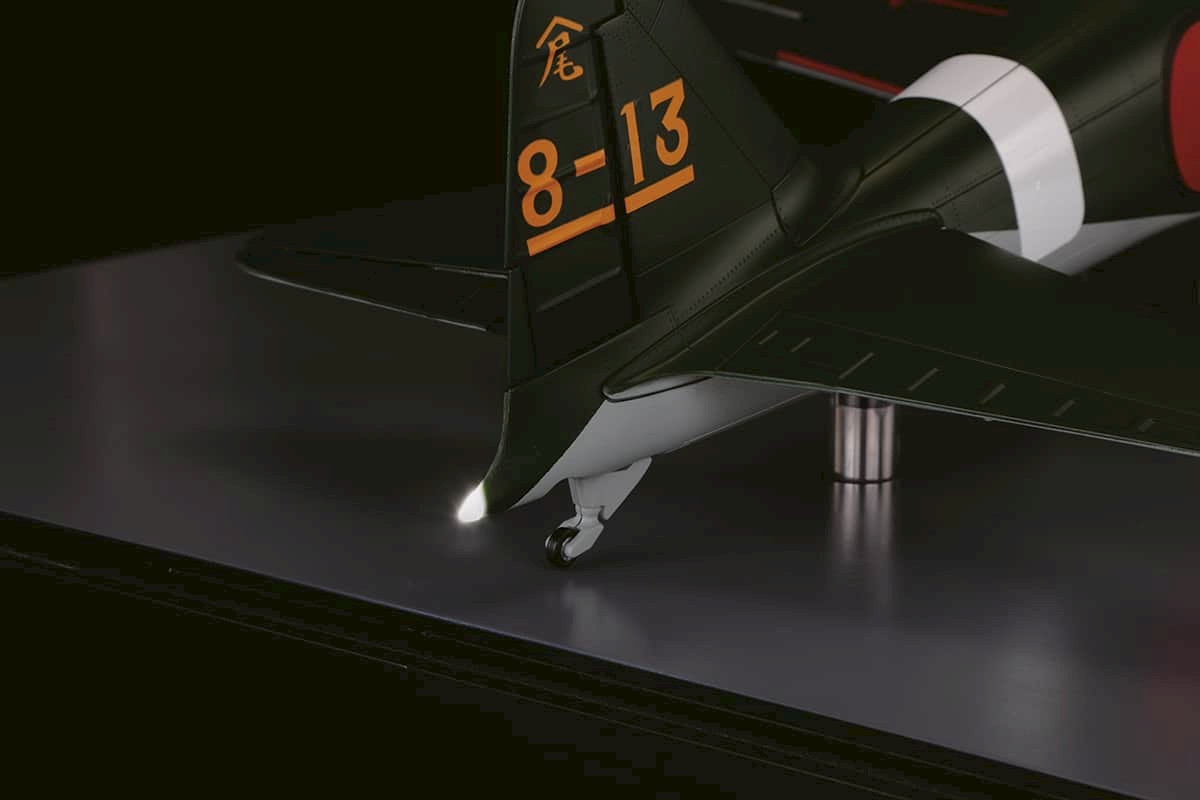
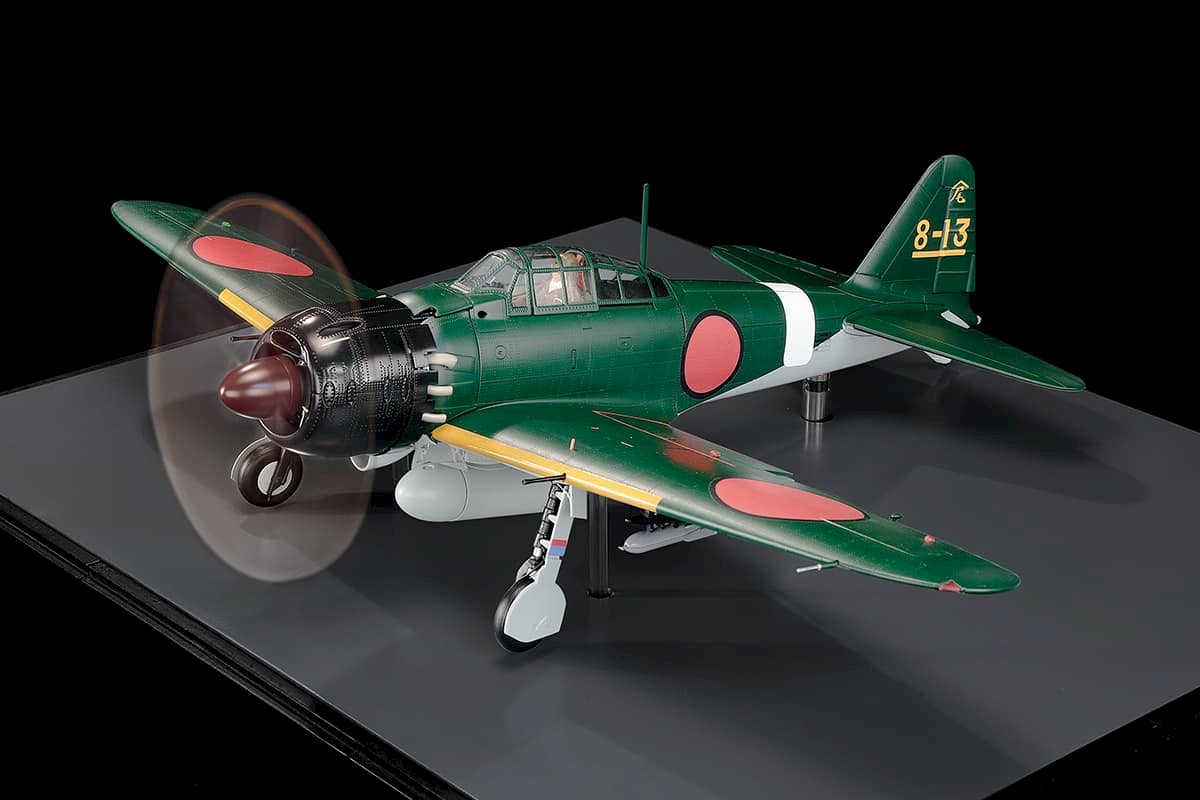
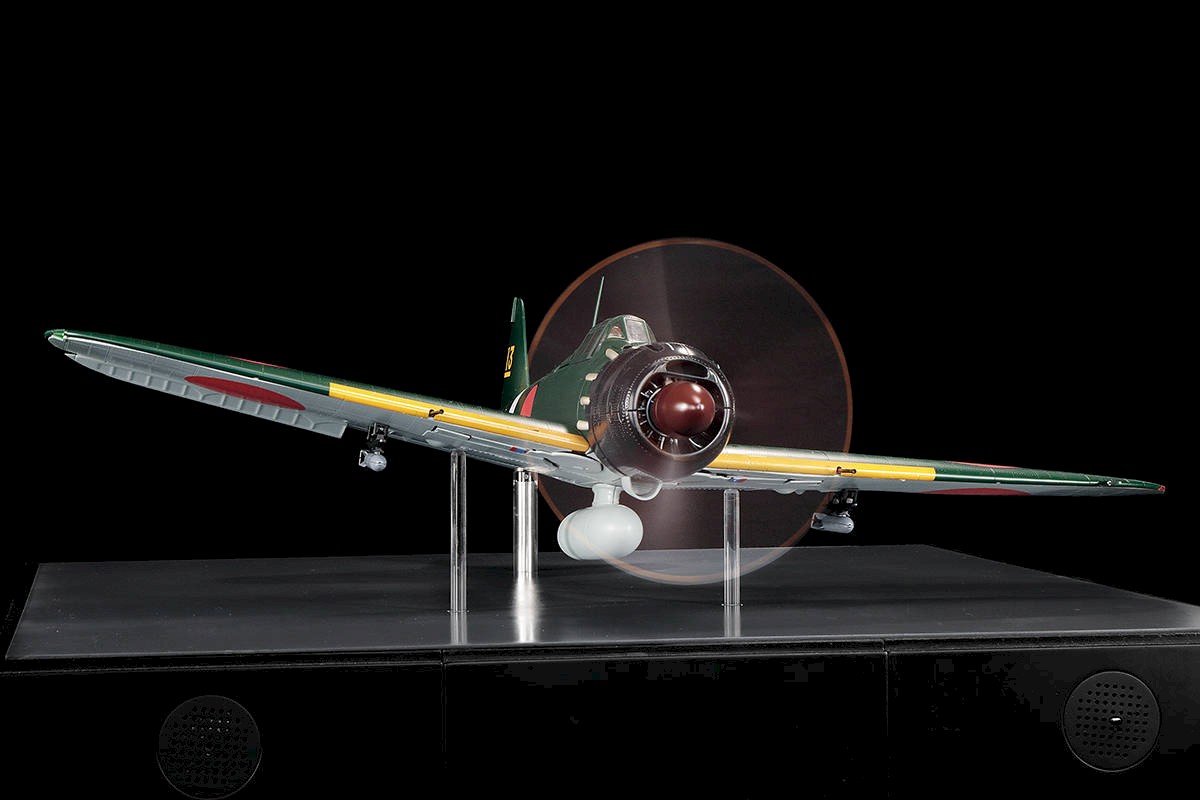
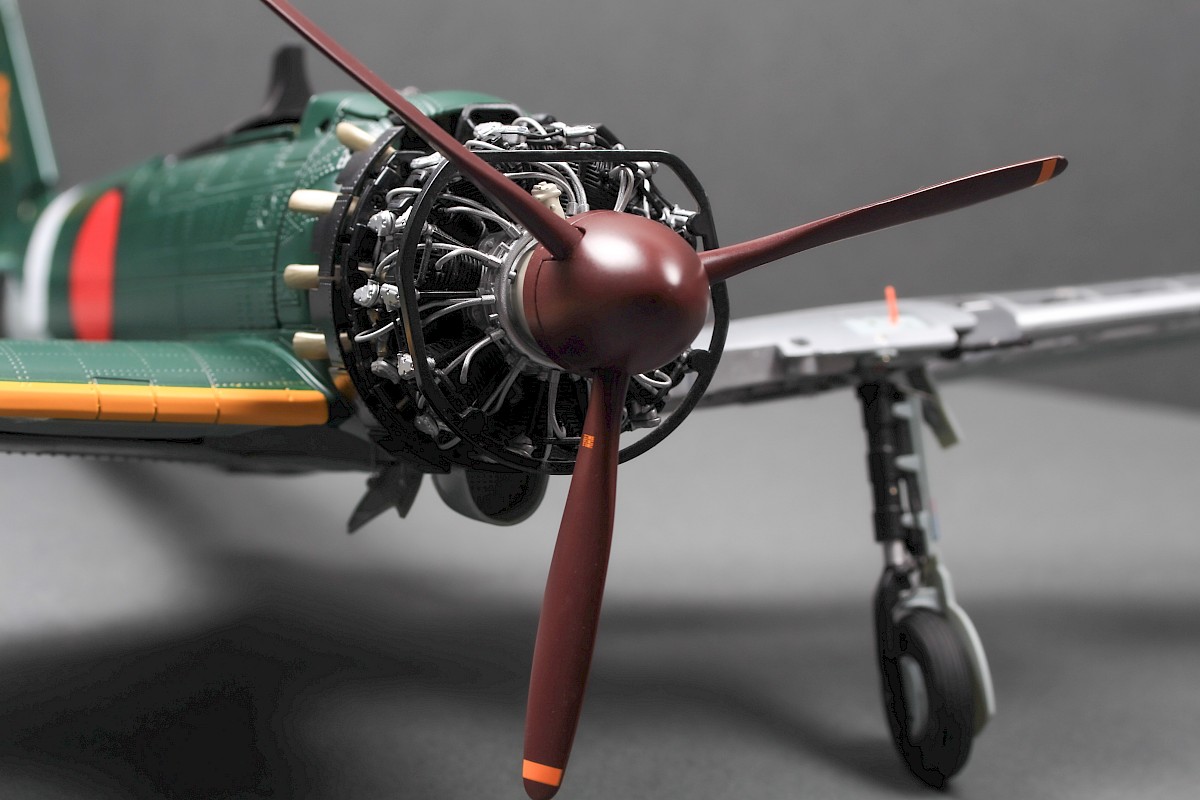
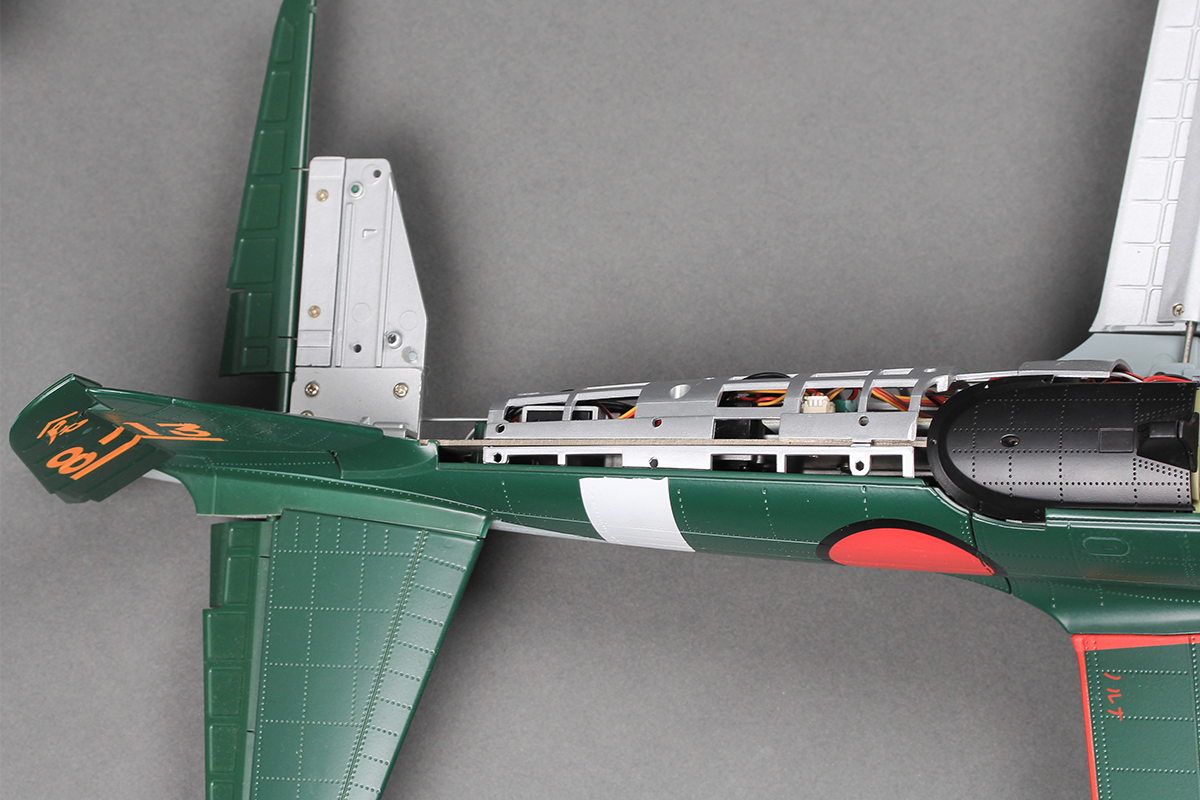
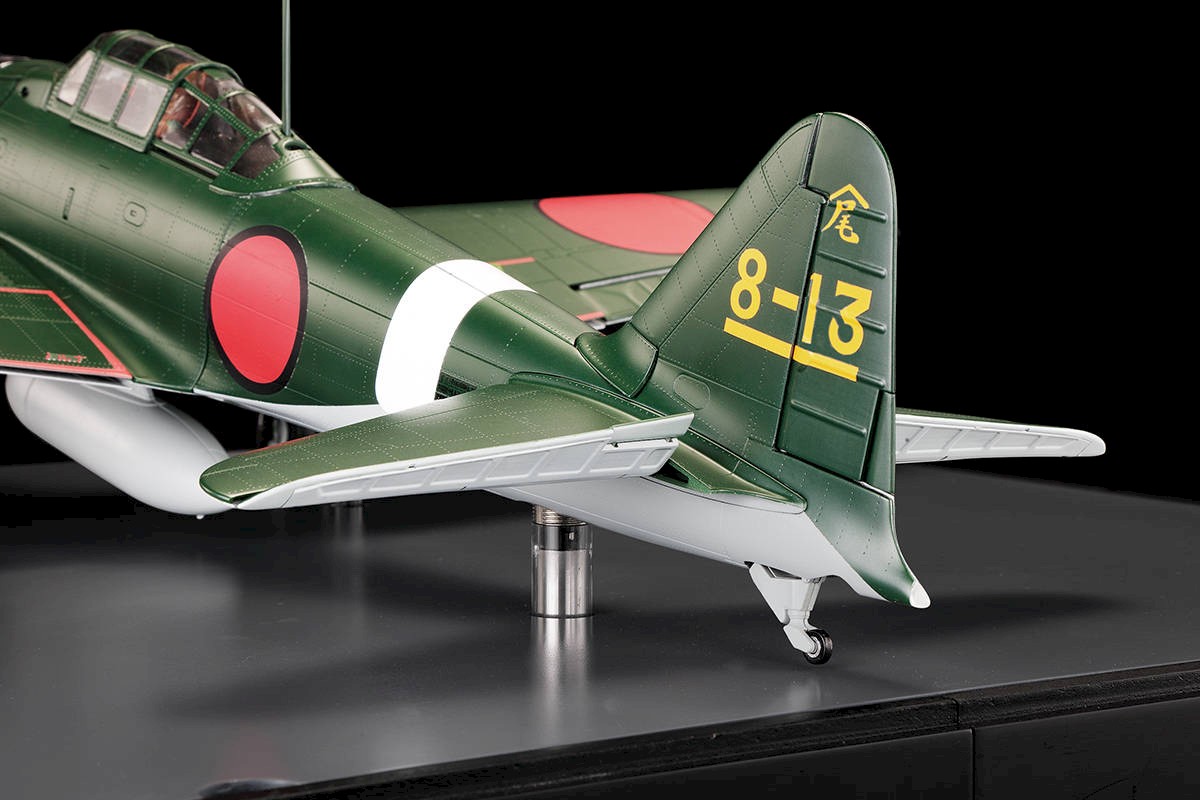

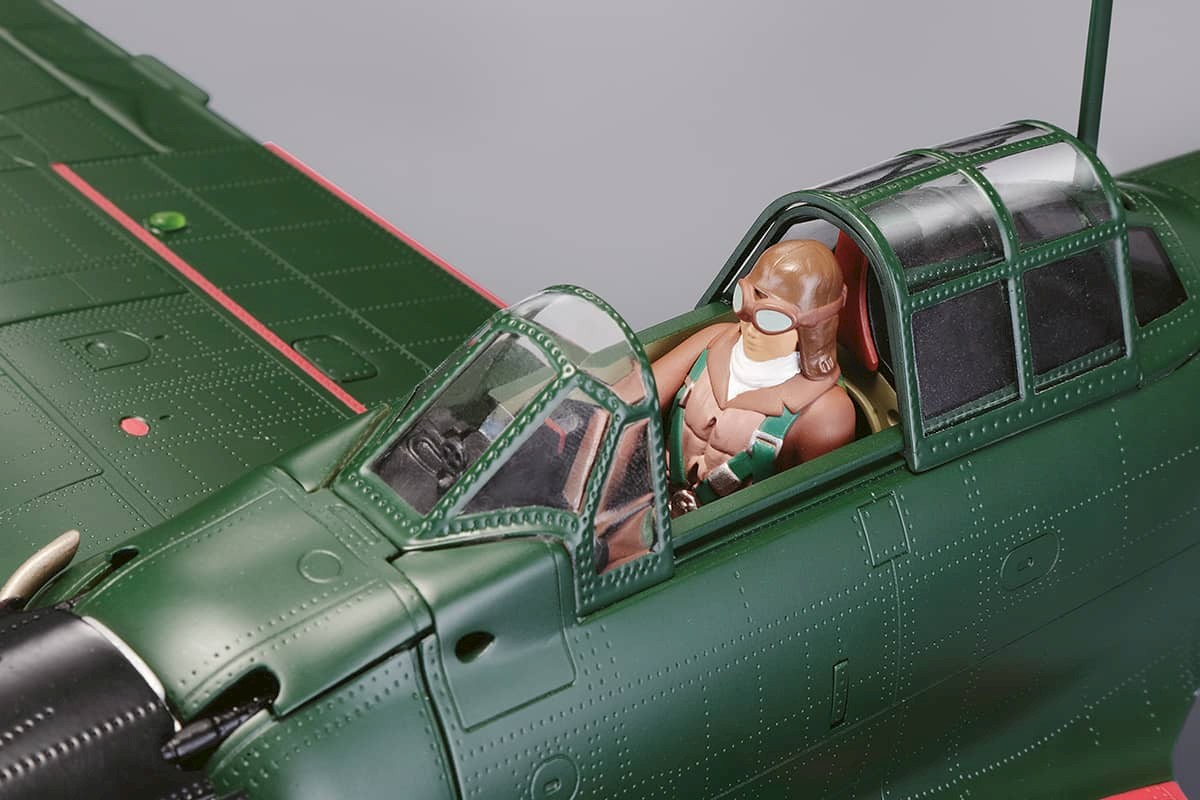
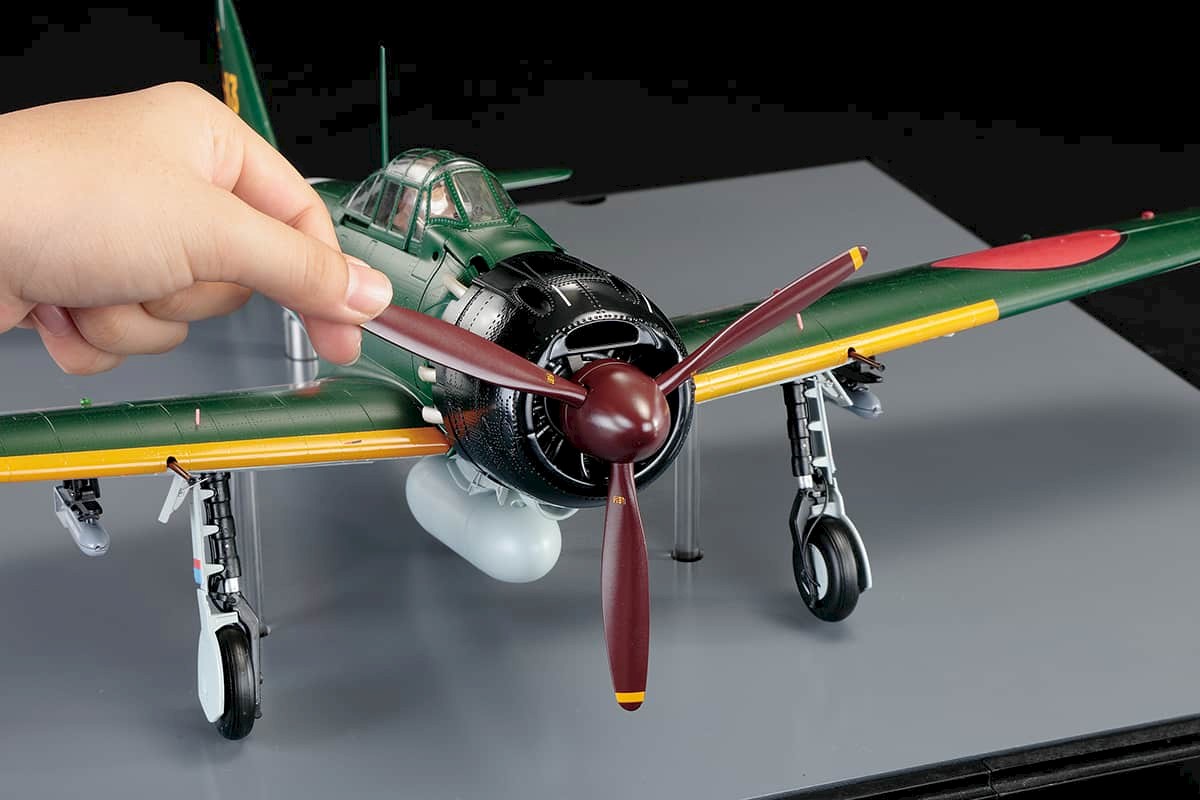
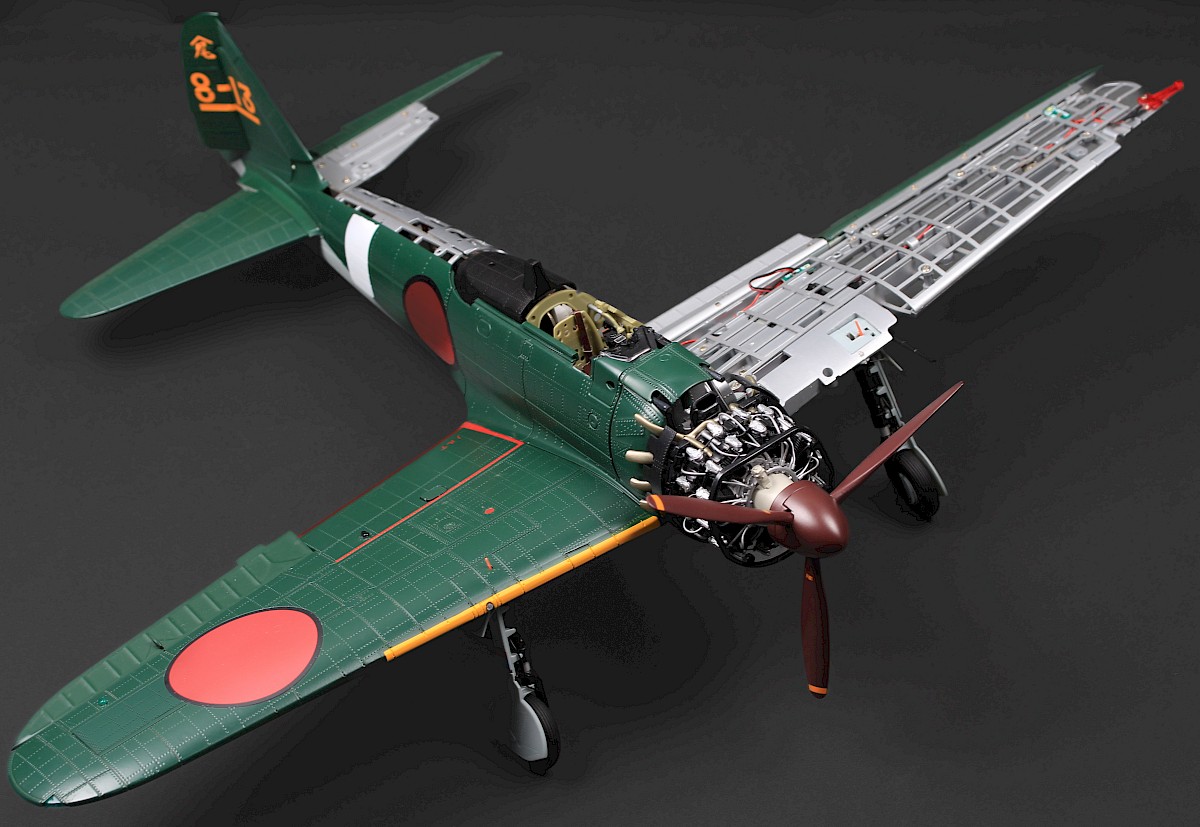
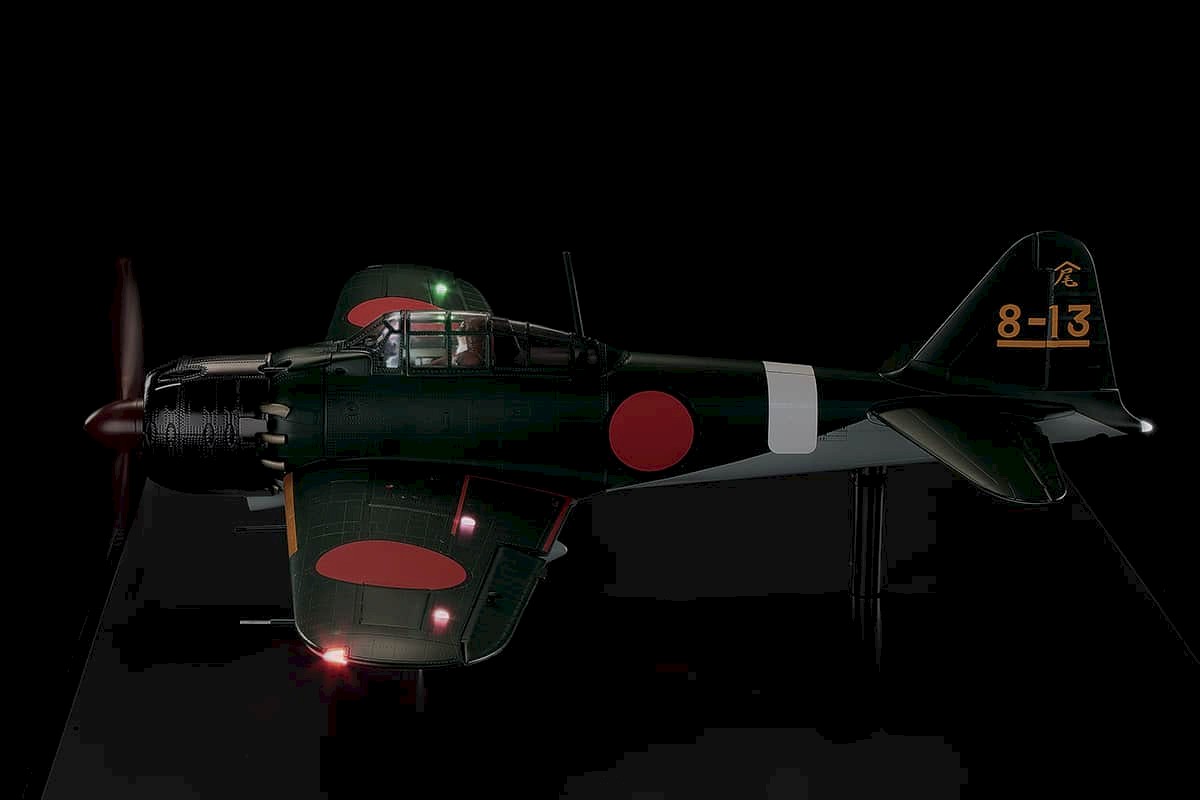
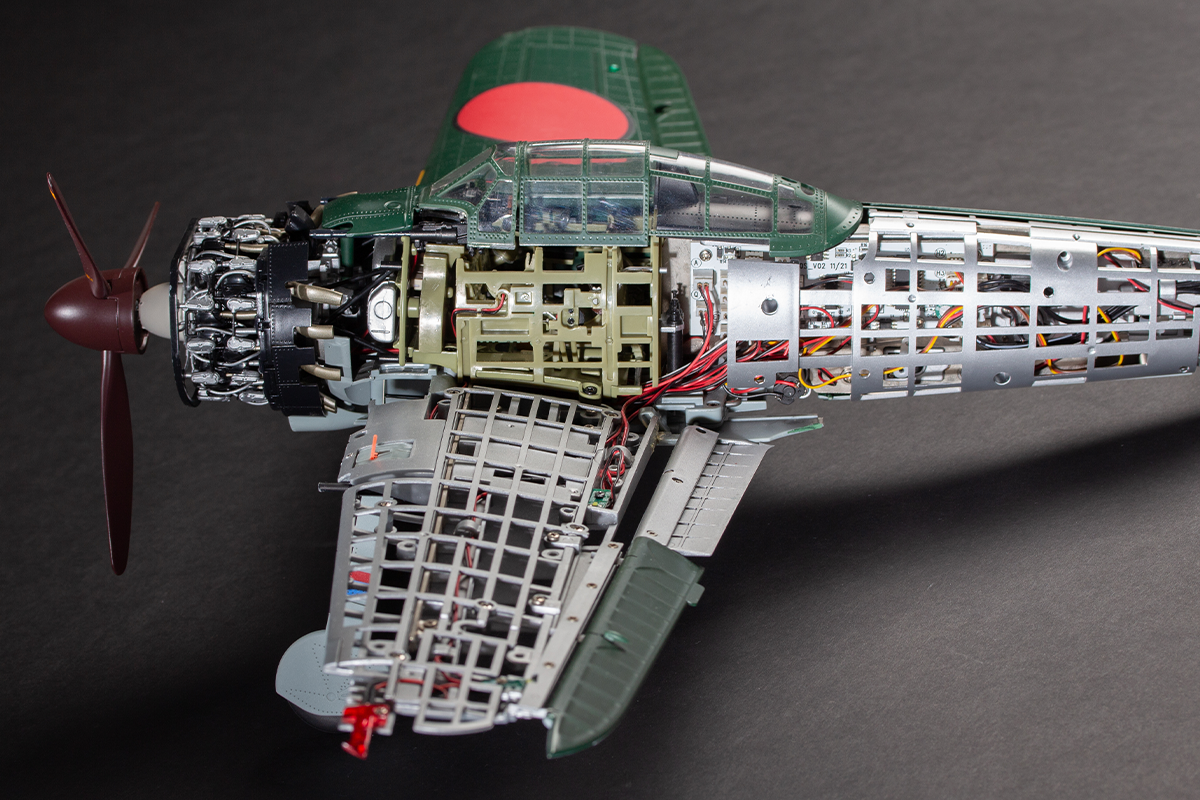
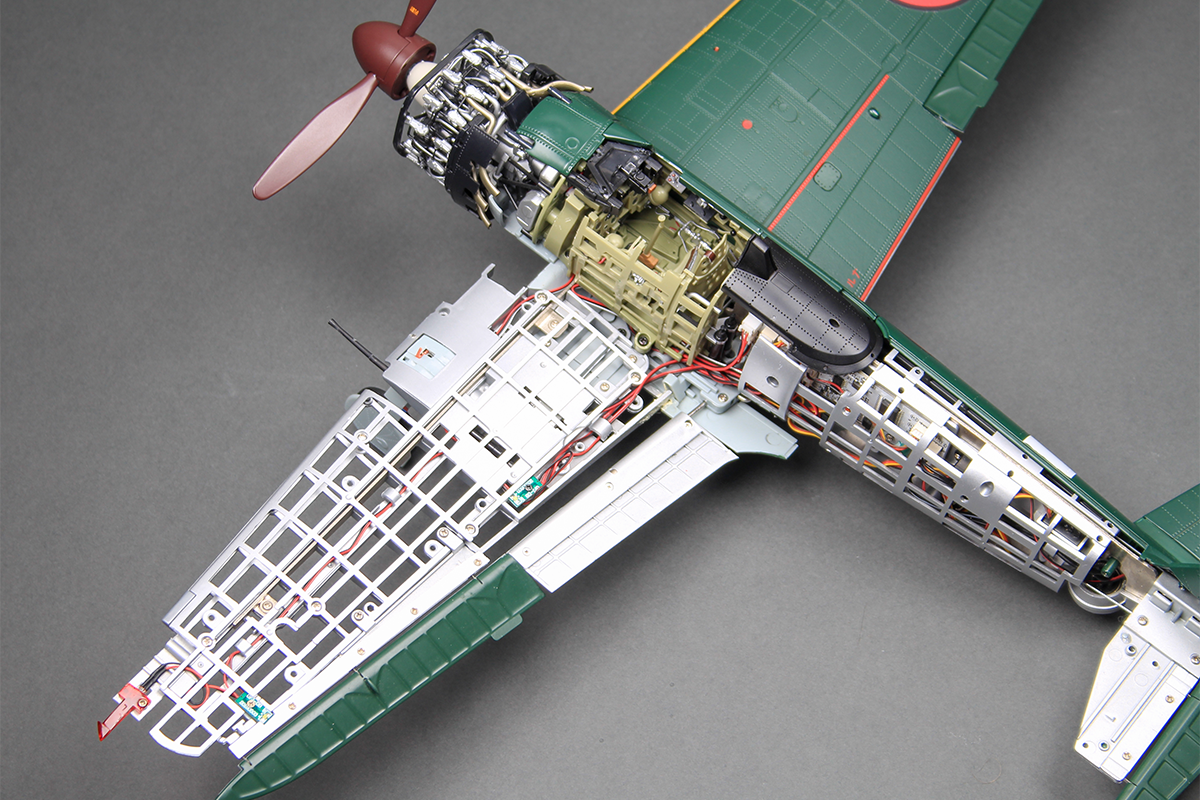
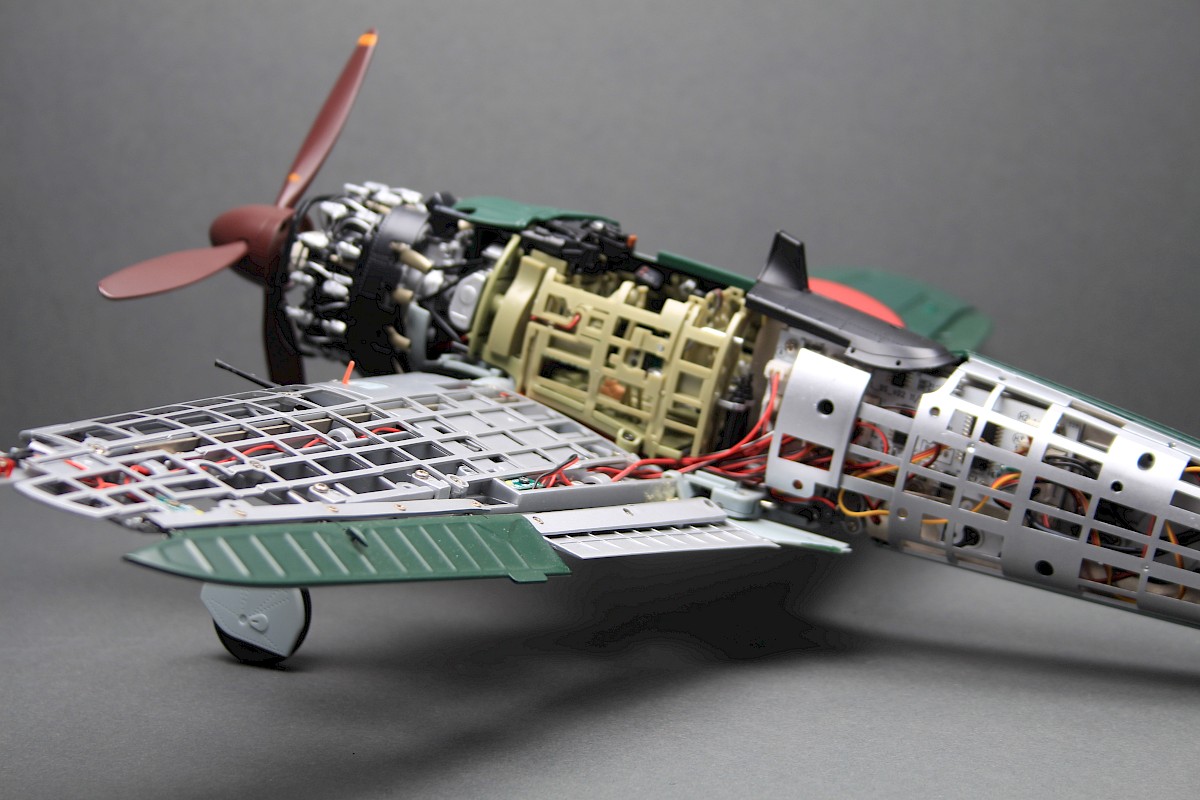
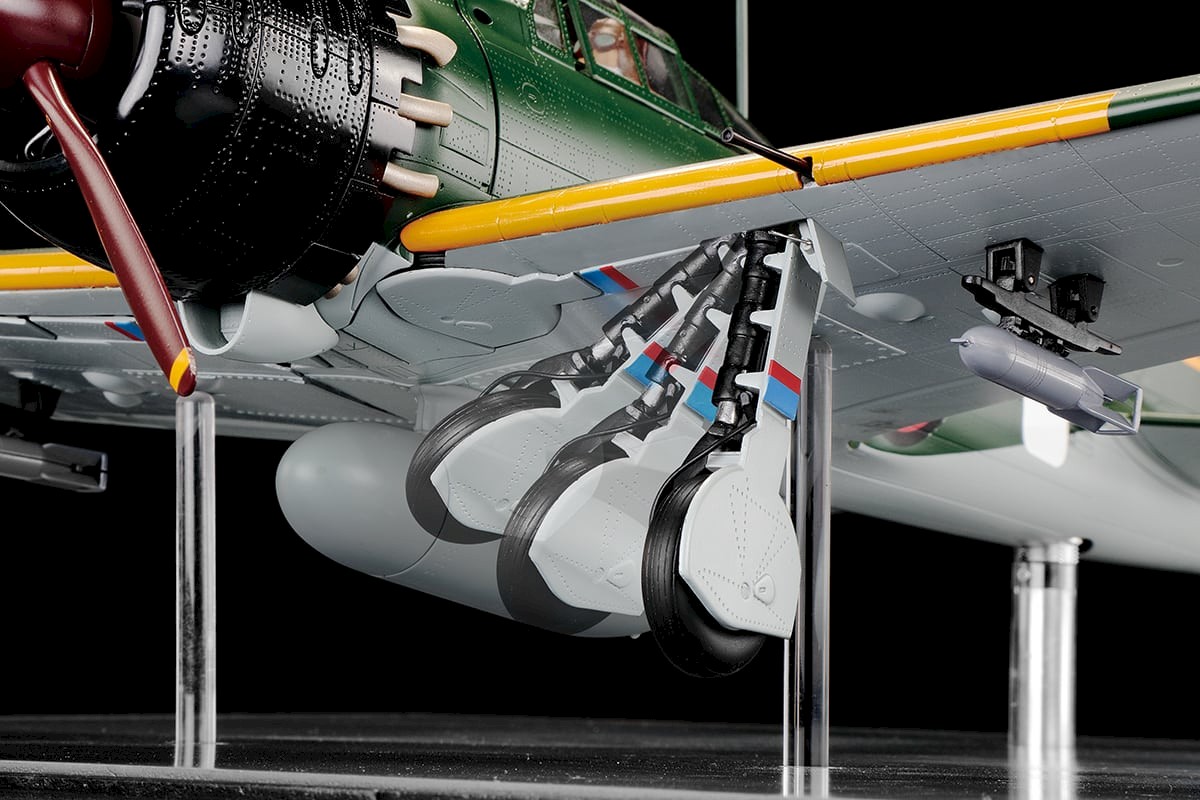
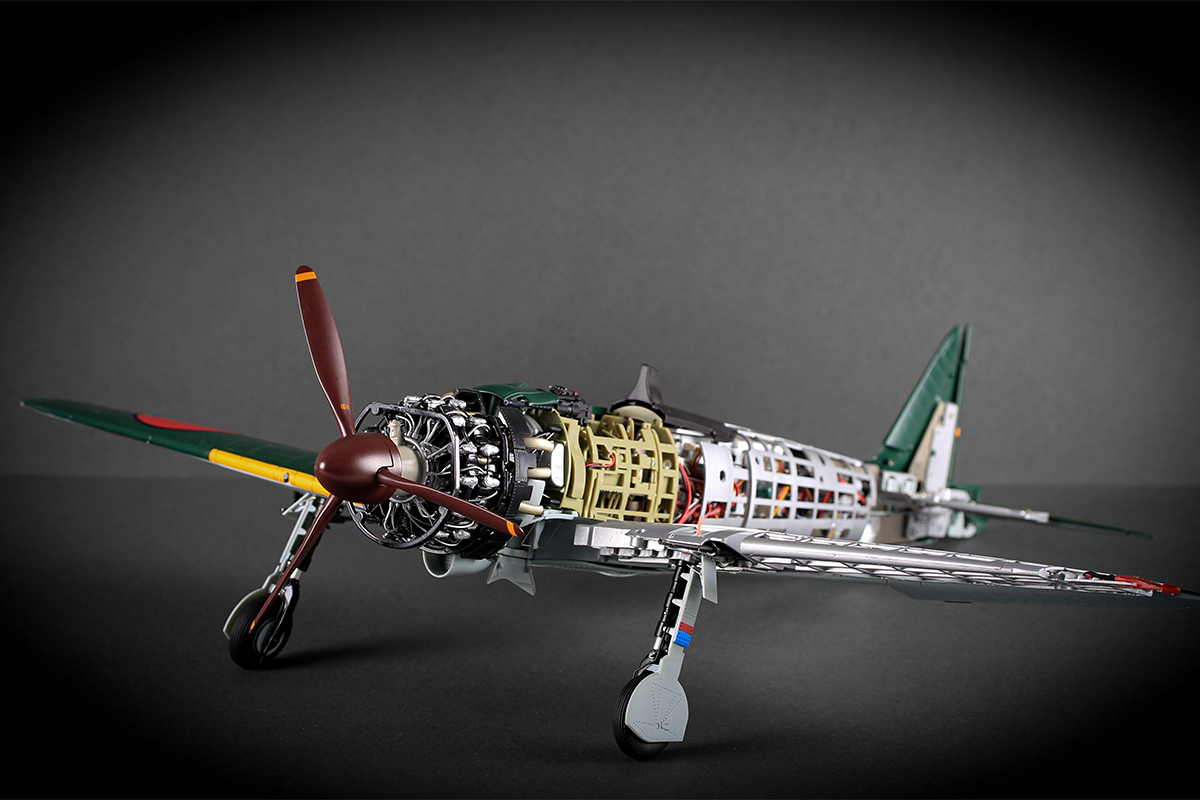
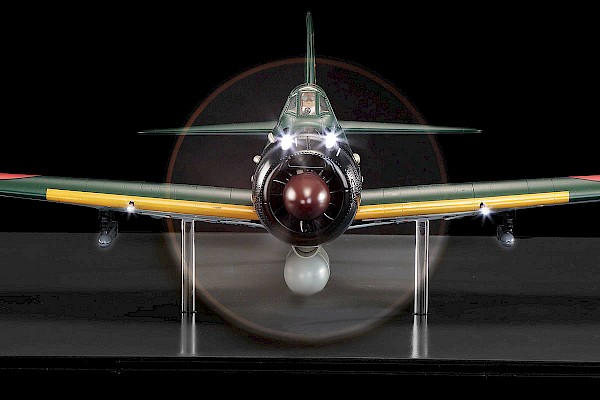
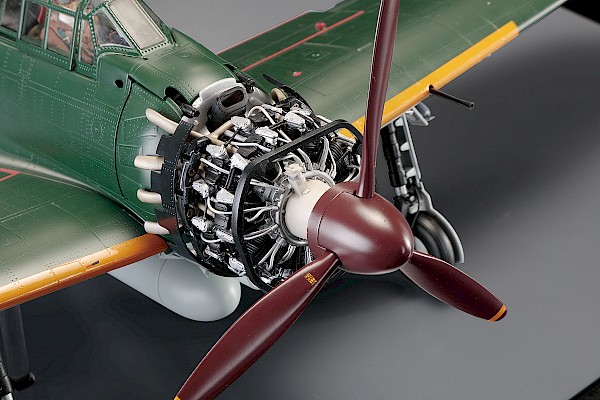
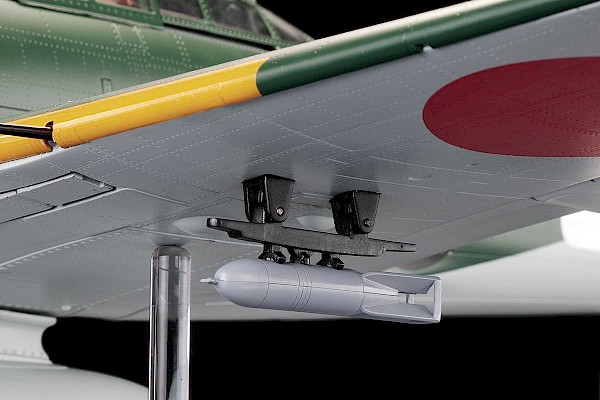
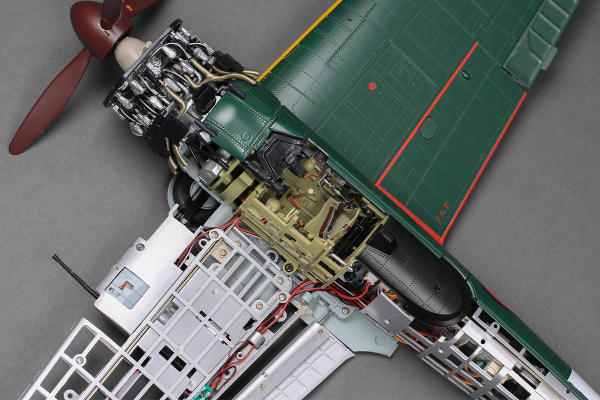
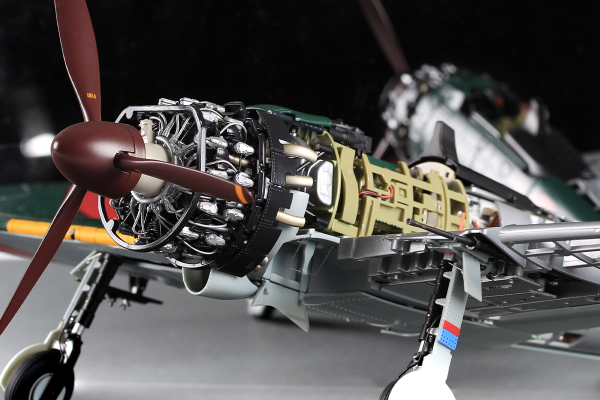
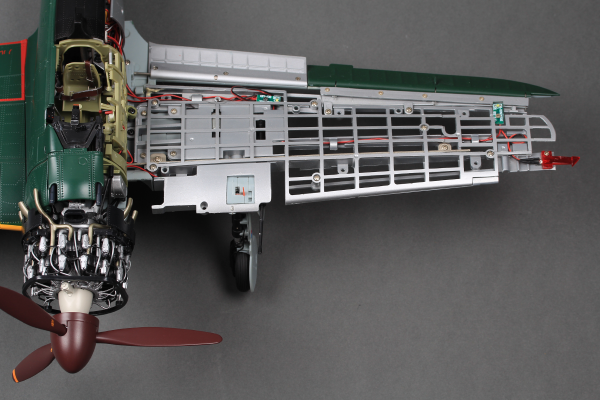
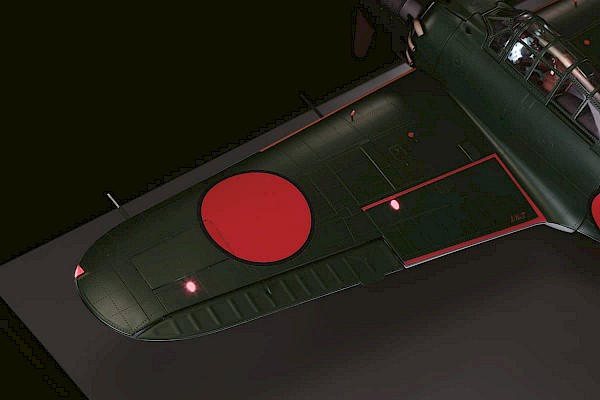
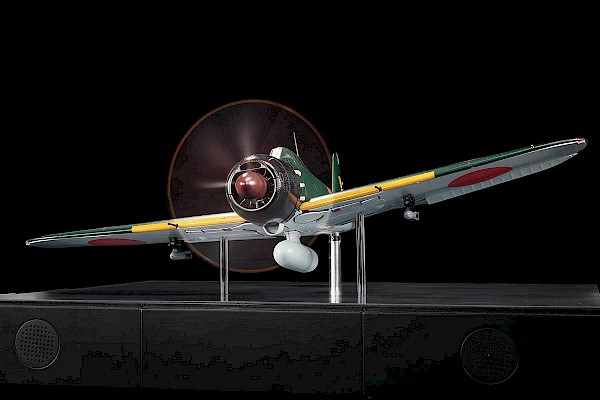
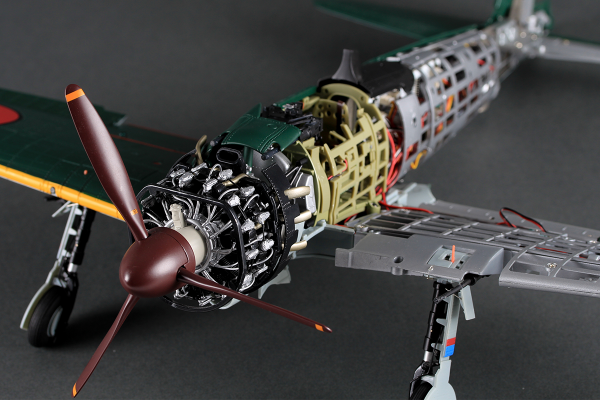
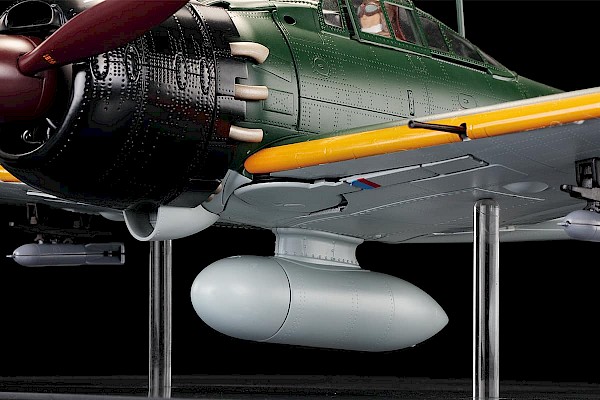
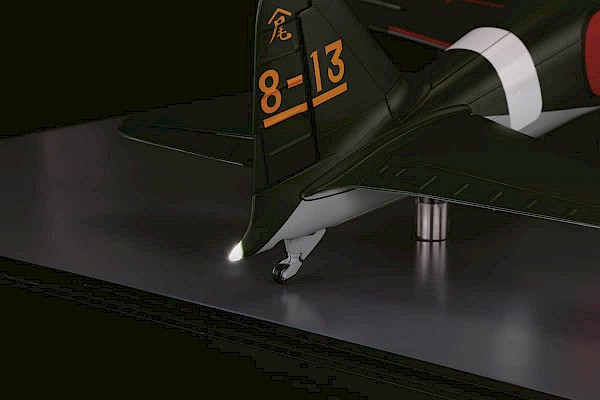
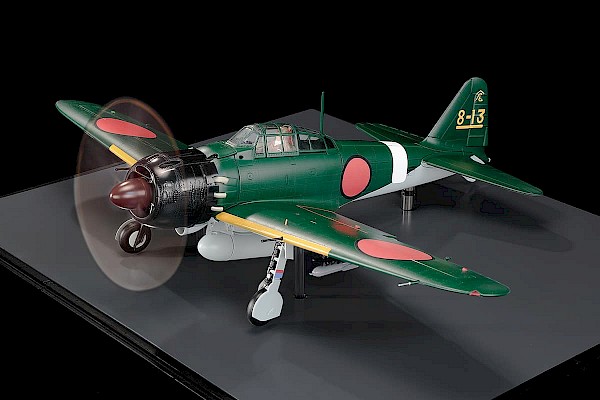
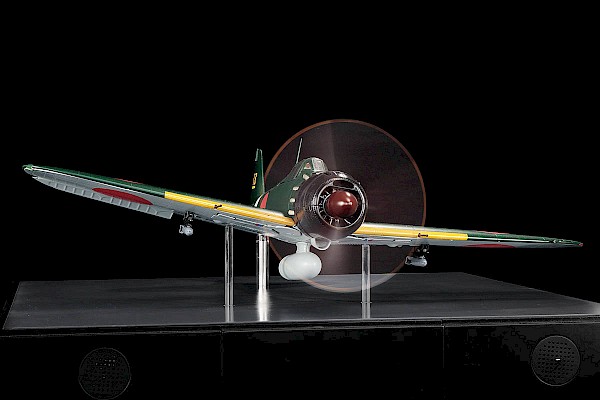
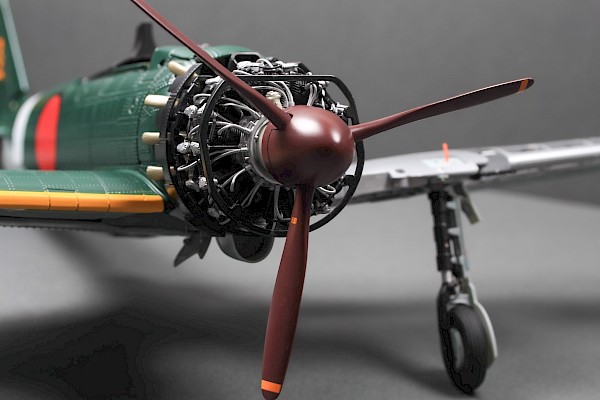
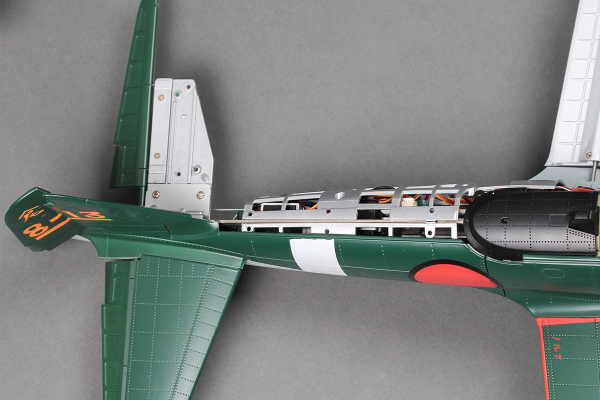
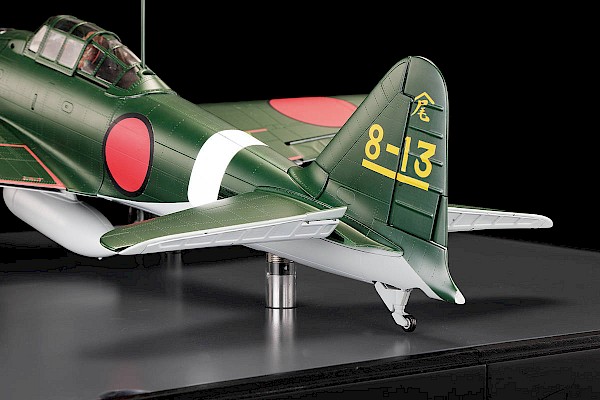
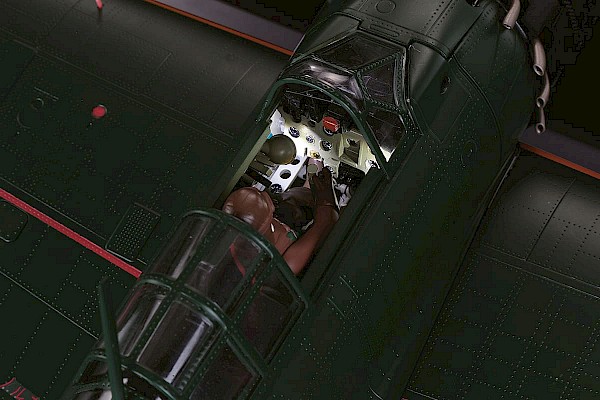
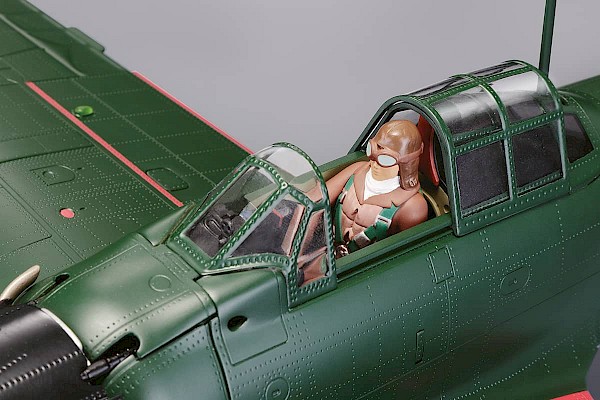
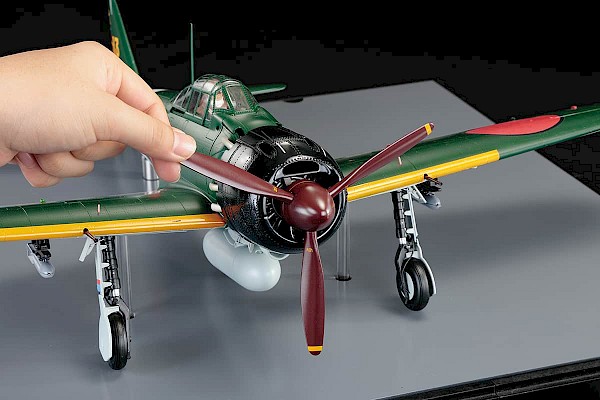
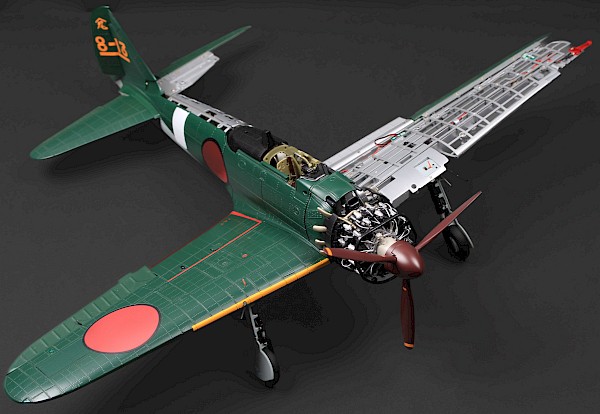
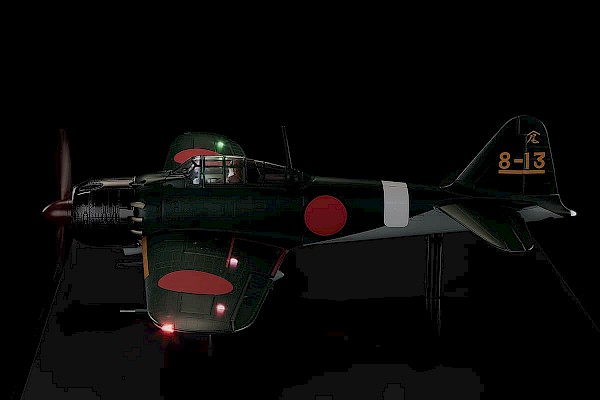
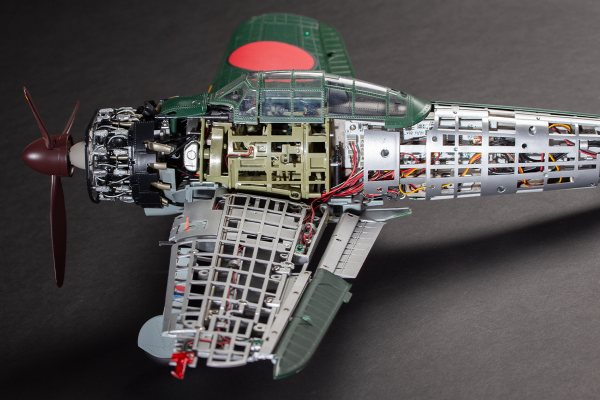
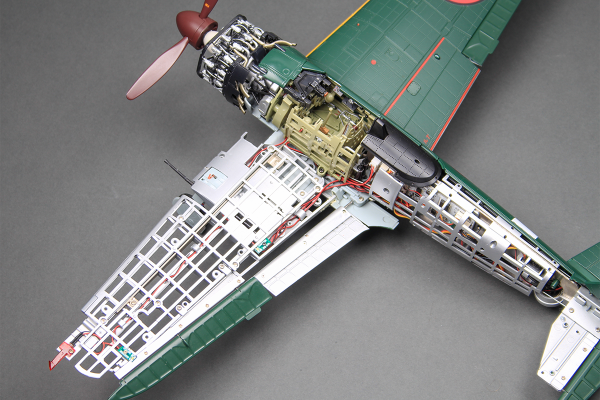
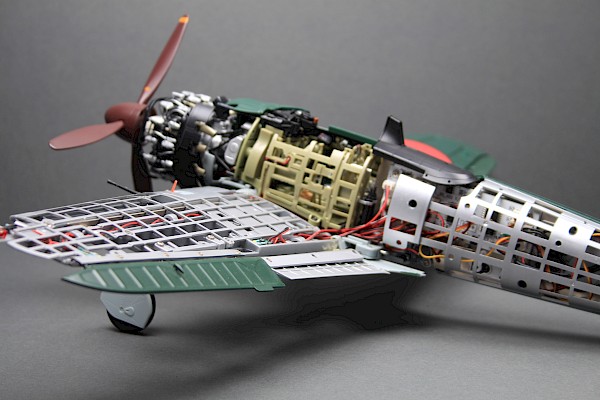
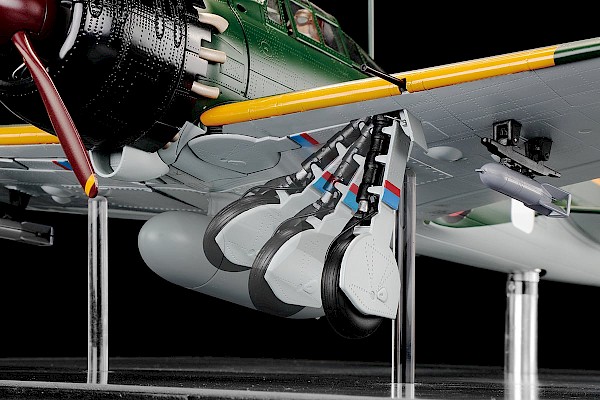
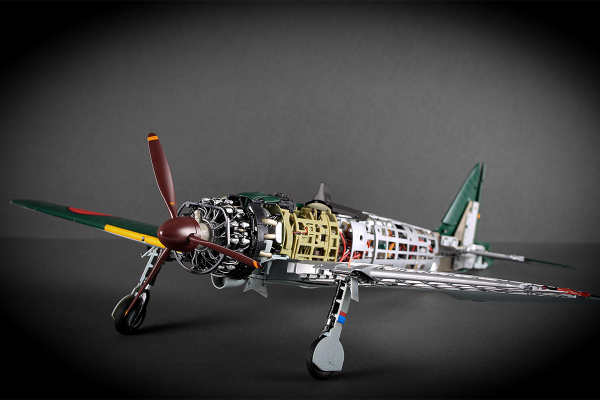
Specifications & Features
Your exquisitely detailed model of the A6M5 Model 52
Zero Fighter
When the Imperial Japanese Army drew up their ambitious specifications for a successor to the A5M plane, Nakajima -the prominent Japanese aircraft manufacturer – pulled out of the bid fearing the challenge impossible. Mitsubishi designer Jiro Horikoshi persevered with a design that incorporated many of the most advanced techniques of the era. The result: the most manoeuvrable fighter aircraft in aviation history and the most formidable adversary for any plane in the Pacific conflict during WWII.
Now you have the opportunity to build and recreate this iconic fighting machine.
Specification
Scale: 1:18
Materials: Metal and ABS plastic parts
Length: 50.7 cm (20″)
Width: 61.1 cm (24″)
Height: 19.5 cm (7 ½”)
Number of parts: 450 approx.
Display Stand: 63 cm x 63 cm (25″ x 25″)
Display stand height: 8 cm (3″)
This model is supplied pre-painted.
Features
- Three-blade remote-controlled propeller with variable pitch
- Sound recording of the only existing original Sakae Type 21 engine
- Landing gear automatically stowed and deployed along with cover that opens and closes
- Different firing sounds and LEDs from the two machine-gun types, plus detachable magazine
- Functioning aviation lights on the wings and taillights
- Detachable drop tank and bombs
- Highly detailed cockpit with moveable canopy, pilot and interior light
- Remote-controlled ailerons
- Moveable elevators and rudder
It's all in the detail
Outstanding detail at 1:18 scale
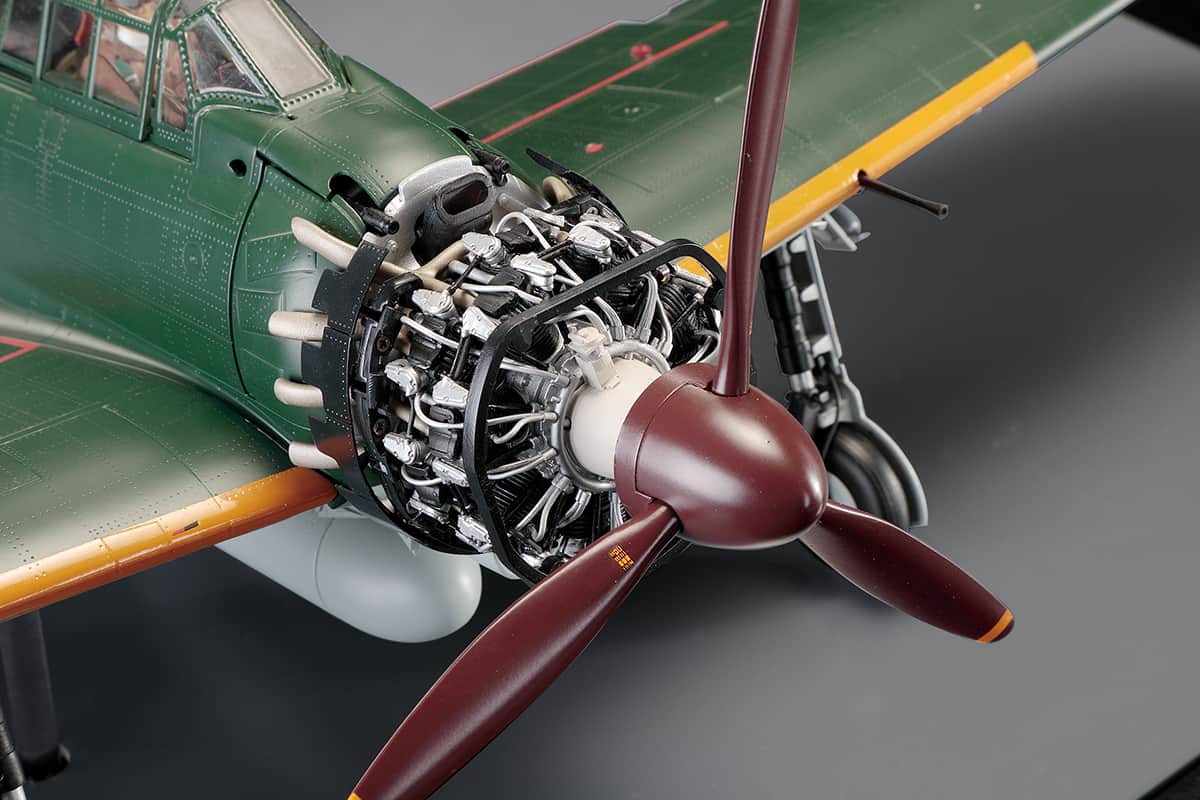
SAKAE TYPE 21 ENGINE
Remove the cowling to reveal an intricate replica of the Nakajima Sakae Type 21 engine. Listen to the engine sound from a recording of the only existing original Sakae Type 21.
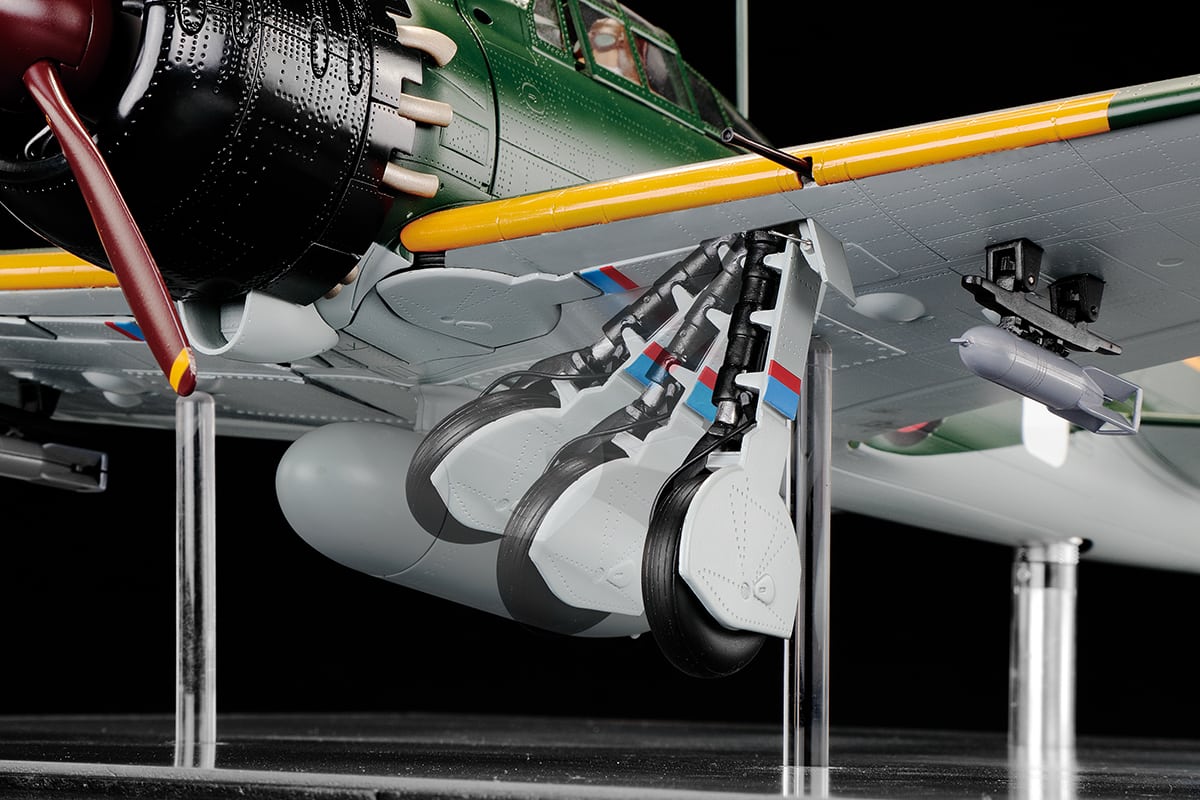
RETRACTABLE LANDING GEAR
The main landing gear and tail leg is automatically stowed or deployed according to each flight operation. In conjunction with this movement, the base cover automatically opens and closes.
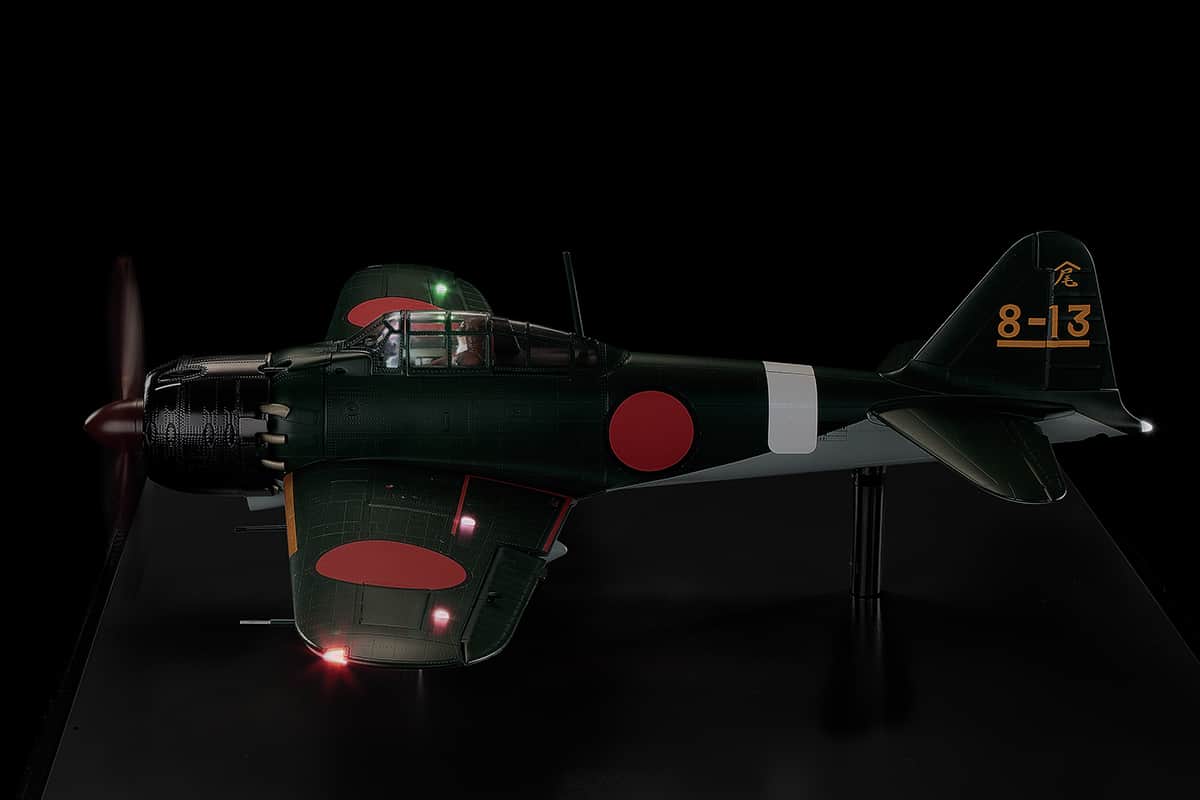
LIGHTS AND SOUNDS
Both types of machine guns fire with blinking LEDs. Additional LEDs on the main upper wing surface, wingtips and taillights faithfully reproduce a dawn or twilight sortie and night operation.
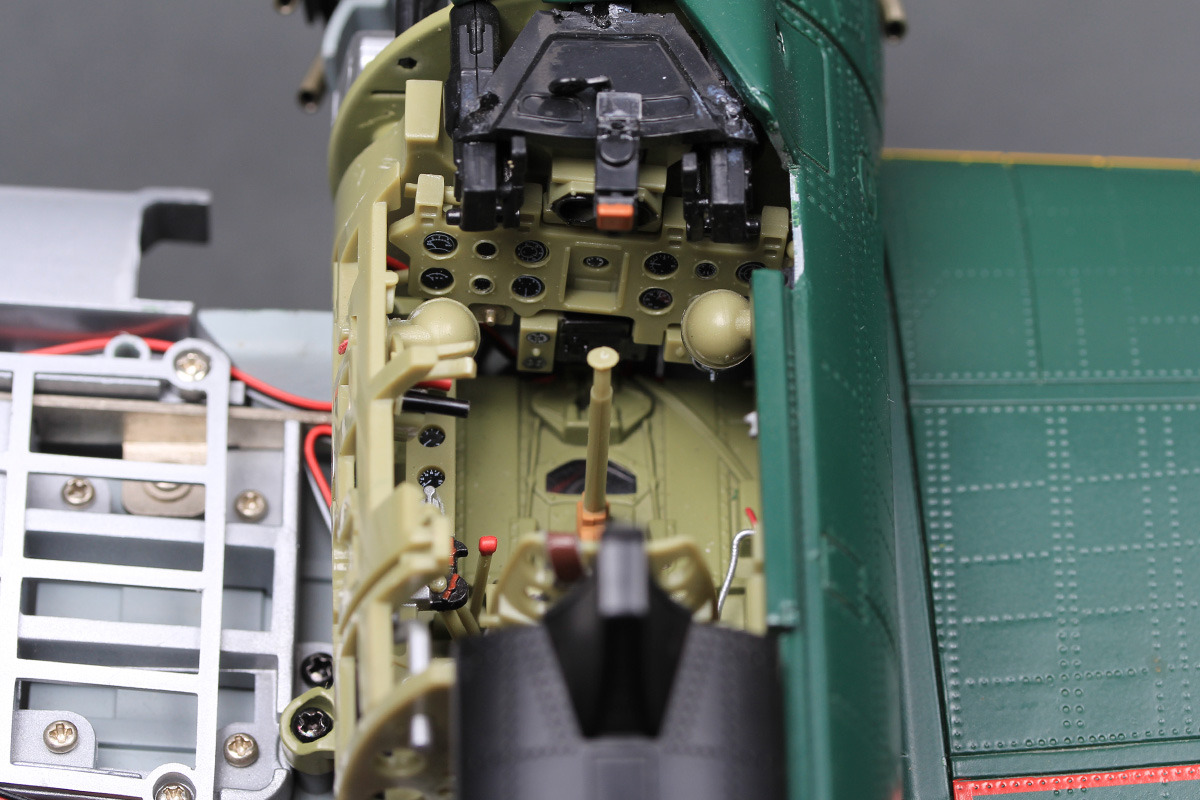
COCKPIT
Sliding the canopy backwards reveals a cockpit laid out in such exquisite detail it looks every bit the fully operational aircraft. A highly skilled pilot and interior lighting enhances the dynamic feelings evoked.
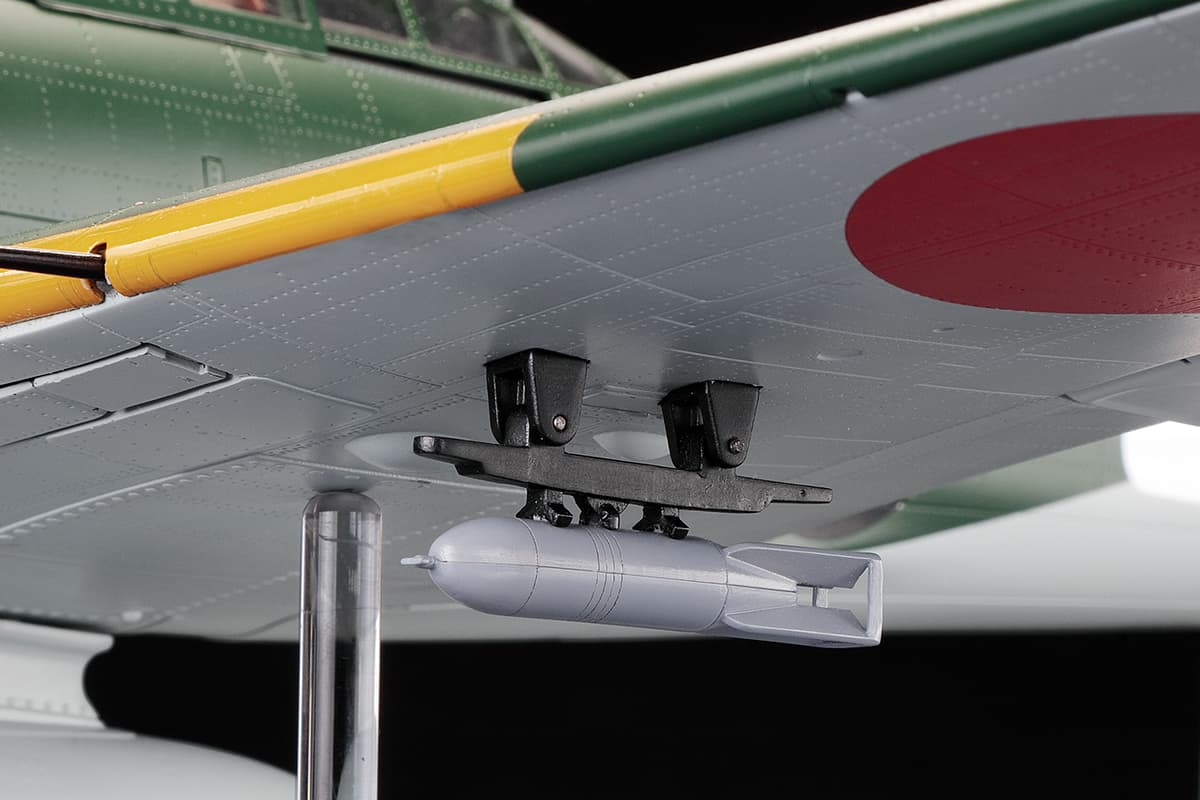
DROP TANK & BOMBS
The drop tank attached to the underside of the aircraft can be removed in combat operations to reduce weight and improve manoeuvrability. The Zero Type 52 also carried bombs on the underside of the main wings which can also be removed.
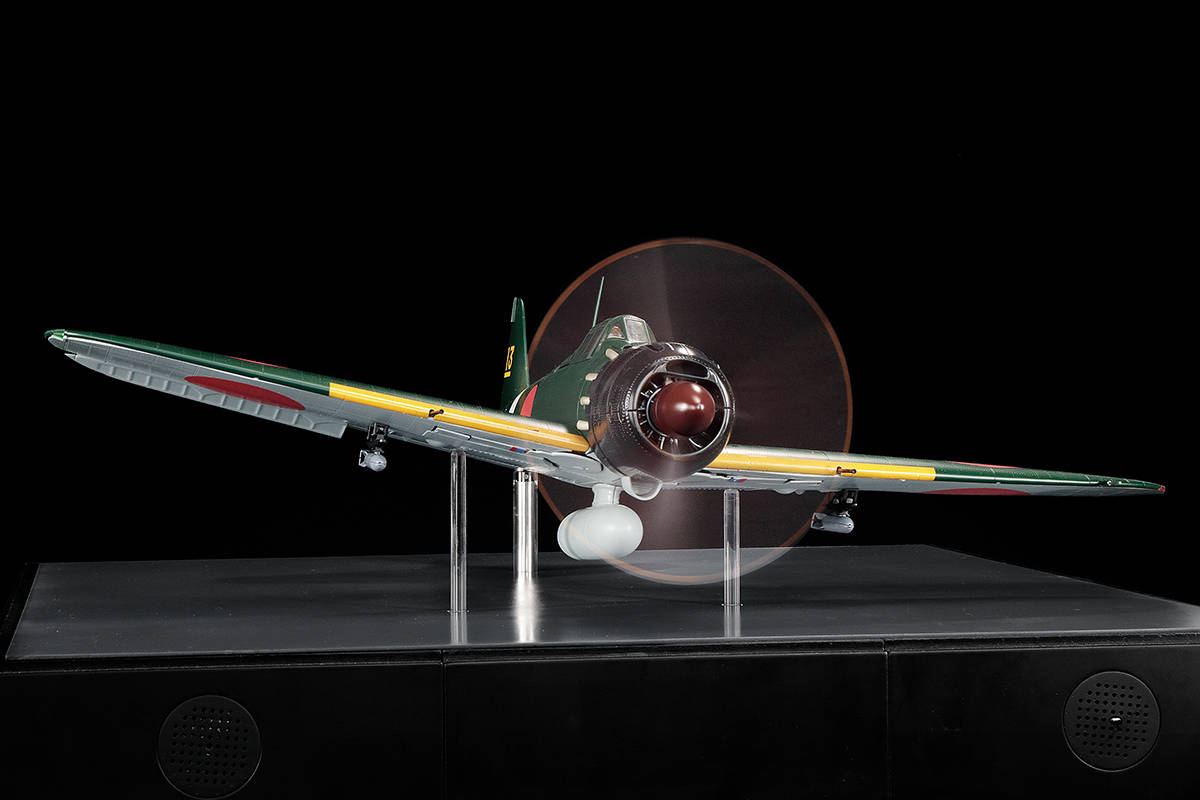
ELECTRONIC DISPLAY
Your model includes an electronic display stand allowing you to recreate run-up, take off, horizontal flight, turning left and right, in combat, landing descent and night operation. All manoeuvres are operated by remote control.
Video
Pack 1 Build
World of Wayne
Zero
Undercarriage
Lights
Machine guns
Building the cockpit
Building the fuselage
Your buying options...
When you place your order we will send your first pack with the first stages of your kit to build your model. Following this, you will be sent another pack every month for 11 months. You will be charged monthly.
Alternatively, you may choose a Full Kit, Accelerator or the 24-month plan
click here for more details.
We ship worldwide.
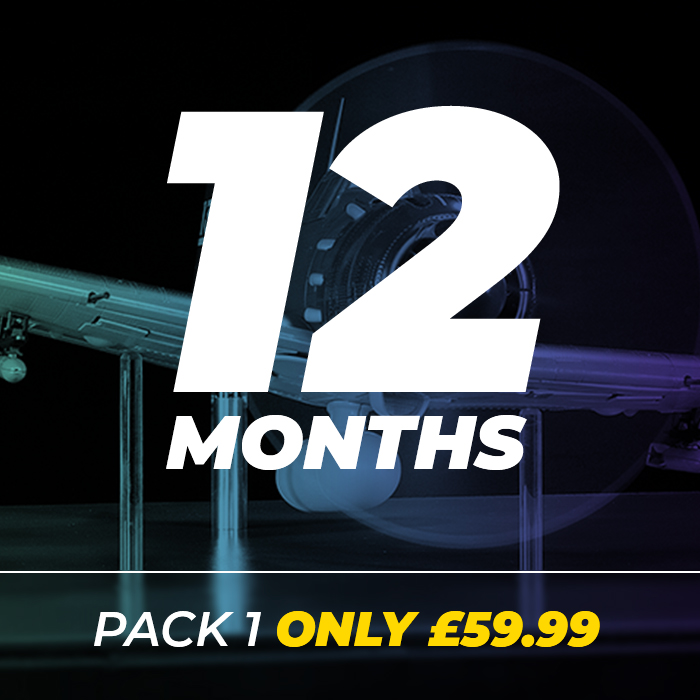
Pack 1 only £59.99
then £119.99 per month

Pack 1 only £59.99
then £64.99 per month

Packs 1–6 – £639
then £119.99 per month
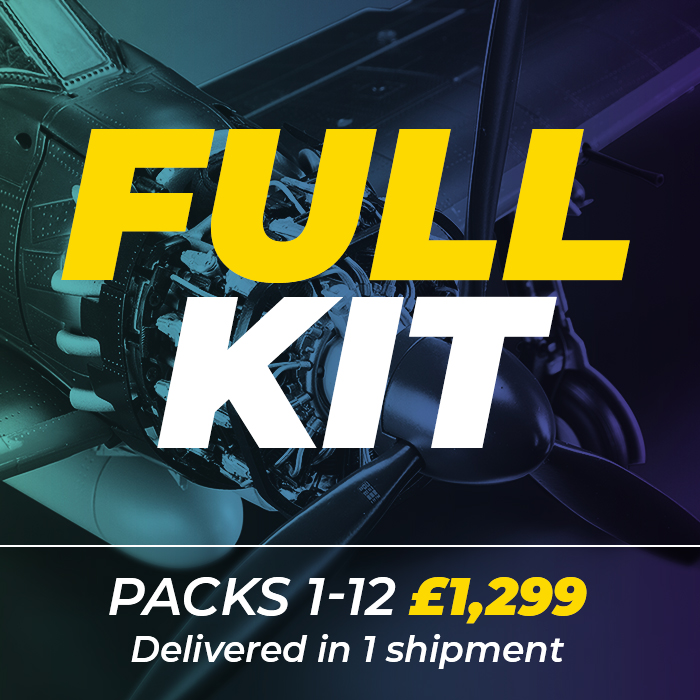
Packs 1-12 only £1,299
Get the Full Kit!
The Agile A6M Zero
The Successor to the A5M with Ambitious Specifications
When the Imperial Japanese Army challenged Mitsubishi and Nakajima to design and build successors to the A5M plane to aid the war effort in China, the specifications were so ambitious that Nakajima pulled out of the bid leaving chief designer Jiro Horikoshi to assemble a team.
The new plane was to have a top speed of 500 km/hr, be fitted with two 7 mm machine guns, two 20 mm cannons, be capable of flying 2 hours at max speed and 6–8 hours at cruising speed with drop tanks attached. The plane also needed to be carrier based (capable of flying off an aircraft carrier) which limited its wing span.
Horikoshi set about designing the Zero with this specification in mind. His goals were to make the new aircraft as manoeuvrable as possible and to provide it with a range capable of escorting Japanese bombers to China and back. Horikoshi knew that key to this was making the fighter as lightweight as possible.
Design changes included a one-metre shortening of the main wings from 12 to 11 metres, and incorporated many of the most advanced techniques of the era. Thin elliptical wings minimised drag along with state-of the art flush riveting. New heat treatment knowledge obtained from the Germans allowed Horikoshi to develop an all metal structure, its frame entirely made from this new age hardened aluminium and he cut holes into the frame where possible to reduce weight.
Its skin was only 1.2 mm thick over its thickest sections like the leading edge of the wing, to 0.5 mm thick over the thinnest sections at the aft of the plane.
The engine was located close to a smaller cockpit which helped to save weight, but also made the Zero more manoeuvrable. The Zero design team used an engine that made around 300 horsepower less than the Pratt & Whitney R-1840 Twin Wasp powering the F4F-4 Wildcat. Newer American fighters more than doubled the Zero’s horsepower with a commensurate increase in wing loading and performance. However, less wing loading meant quicker manoeuvring.
As the war progressed, the Zero continued to operate without significant improvements, suggesting that Horikoshi’s team had extracted all possible performance from the Zero design.
Eventually, it was improvements in American tactics and technology that resulted in the rapid loss of many Zeros and their pilots. The absence of protective equipment – armour plate and self-sealing fuel tanks – that had allowed the Zero to be so agile in combat exposed a weakness that the Americans were able to exploit.
From 1939 – 1945: A6M1 to A6M8
Designation:
A: carrier fighter (capable of flying off an aircraft carrier)
6: the sixth carrier fighter ordered
M: Mitsubishi
52: model variant
A6M1
Special attention was paid to weight savings, and a new special aluminium alloy developed by Sumimoto was adopted. Powered by a Mitsubishi Zuisei 13 (Auspicious Star) fourteen-cylinder, twin-row air-cooled radial engine, rated at 780 hp for take-off and 875 hp at 11,810 feet.
Two 7.7 mm Type 97 machine guns in the upper fuselage decking
Two wing-mounted 20-mm Type 99 cannon
Three-bladed constant speed propeller
Speed was 305 mph at 12,470 feet – slightly below requirement
A6M2
Re-engineered with a Nakajima NK1C Sakae 12 (Prosperity) engine
Manually upward-folding wingtips (about 20 inches long) were incorporated so that the plane could fit the deck elevators of the Imperial Navy’s aircraft carriers. This modification resulted in a change of designation to Navy Type 0 Carrier Fighter Model 21.
During the first year of the Pacific War, the standard shipboard fighter serving with the US Navy was the Grumman F4F Wildcat. The A6M2 was superior to the F4F Wildcat in speed, climb rate, and manoeuvrability, but the Wildcat had better firepower and was more robust. In a dive the two aircraft were fairly equal, but the turning circle of the Zero Fighter was very much smaller than that of the Wildcat by virtue of its lower wing loadings.
A6M2-N “Rufe”
A seaplane adaptation of the Mitsubishi A6M2 Zero Fighter
The A6M2 Model 11 with the non-folding wingtips was used as the basis.
The retractable landing gear was removed and the wheel wells were faired over. A large central float was mounted and two stabilizing cantilever floats were fitted underneath the outboard wings.
A6M3”Hap”
Powered by a 1130 hp Sakae 21 equipped with a two-speed supercharger instead of a single-speed unit as used on the earlier Sakae 12.
The ammunition supply for the wing-mounted 20-mm cannon was increased from 60 rpg to 100 rpg. In order to simplify production and maintenance, the folding wingtips and the tab balances were removed, reducing the wingspan to 36 feet 1 1/16 inches and wing area to 231.75 square feet. This resulted in a slight increase in the level speed with little adverse effect in the overall manoeuvrability. Japanese pilots did find that both the manoeuvrability and climb rate of the new clipped-wing Zero Fighter were slightly poorer than those of the earlier A6M2, but the aircraft was considerably faster in a dive, the ailerons were more effective, and the roll rate was better at high speed.
A6M4
Modified to take an experimental turbo supercharged Sakae engine. However, major teething troubles were encountered with the A6M4, and no production order was placed.
A6M5
The converted A6M3 aircraft was fitted with a new set of wings with heavier gauge skin and with redesigned, non-folding rounded wingtips. The wingspan was reduced to 36 feet 1 1/16 inches.
The A6M5 was faster than the A6M3 Model 32. More important, it could now be dived at speeds of up to 410 mph. It was rushed into production as the Navy Type 0 Carrier Fighter Model 52.
The Model 52 began to reach front line units in the autumn of 1943. It was immediately confronted by the new Grumman F6F Hellcat, which was slightly less manoeuvrable but which was much more strongly built, heavier armed, and better protected.
A6M5a
Heavier gauge wing skin which enabled a further increase in diving speed to 460 mph, bringing it almost up to Western standards. This was to be the highest diving speed attained by any Zero variant. Armament was improved by replacing the drum fed Type 99 Model 2 Mk3 cannon with 100 rpg with belt-fed 20-mm Type 99 Model 2 Mk4 cannon with 125 rpg.
A6M5b
Additional armament, some fire protection for the fuel tanks and some armour protection for the pilot. One of the fuselage-mounted 7.7-mm Type 97 machine guns was replaced by a 13.2-mm Type 3 machine gun.
A6M5c
Two additional 13.2-mm machine guns were installed in the wings outboard of the cannon. The fuselage-mounted 13.2-mm machine gun was retained, but the smaller-calibre 7.7-mm fuselage-mounted gun was deleted. An armor plate was mounted behind the pilot’s seat to provide some protection against attacks from the rear. Wing racks were provided for unguided air-to-air rockets.
A6M6c
Powered by the water-methanol boosted Sakae 31 engine.
A6M7 dive bomber
The under-fuselage drop tank installation was replaced by a special bomb rack capable of carrying a single 551 pound or 1100 pound bomb.
A6M8
The A6M8 was the last production version of the Zero.
The forward fuselage was completely redesigned to accommodate the 1560 hp Mitsubishi MK8P Kinsei 62, which had a larger diameter than the Sakae, requiring that the fuselage-mounted gun be removed. At the same time, the fuel tank fire-extinguishing system was improved, and additional fuel tankage was added. The fuselage centre line could carry a single 1100-lb bomb, and a pair of 77-Imp gall drop tanks could be carried underneath the wings.
Six thousand three hundred machines were ordered. However, owing to the chaotic conditions prevailing in Japanese industry in the closing months of the war, none were actually delivered.
Technical Specification
The first A6M5 flew in August of 1943. In spite of an increase in all-up weight of 440 pounds, the A6M5 was faster than the A6M3 Model 32, and could reach a maximum level speed of 351 mph at 19,685 feet.
More important, it could now be dived at speeds of up to 410 mph. It was rushed into production as the Navy Type 0 Carrier Fighter Model 52.
Among the field modifications carried out to A6M5s was the addition of a 20-mm cannon mounted to fire obliquely upward at an angle of 30 degrees from a position behind the pilot’s cockpit. These fighters were intended as B-29 Superfortress interceptors.
Specification of A6M5 Navy Type 0 Carrier Fighter Model 52:
Engine: Mitsubishi NK1F Sakae 21 fourteen cylinder air-cooled radial, rated at 1130 hp for takeoff, 1100 hp at 9350 feet, 980 hp at 19,685 feet
Performance:
Maximum speed: 351 mph (565 km/h) at 19,685 feet.
Cruising speed: 230 mph (370 km/h).
Climb: to 19.685 feet in 7 minutes 1 second.
Service ceiling: 38,520 feet.
Maximum range: 1171 miles (1185 km) at a cruising speed of 230 mph (370 km/h).
Dimensions:
Wingspan: 36 feet 1 1/16 inches (11 m),
Length: 29 feet 11 3/32 inches (9 m),
Height: 11 feet 6 5/32 inches (3.5 m),
Wing area: 229.27 square feet (70 sq m).
Weights: 4136 pounds (1876 kg) empty, 6025 pounds (2733 kg) loaded.
Armament:
Two 7.7-mm Type 97 machine guns in the upper fuselage decking. A license-built British Vickers design fitted in the cowling and fired through the propeller using synchronizing gear.
Two Type 99 Model 1 20-millimeter cannon. An Oerlikon cannon built under license, one fitted in each wing.
Two 132-lb bombs (60 kg) could be carried on underwing racks.
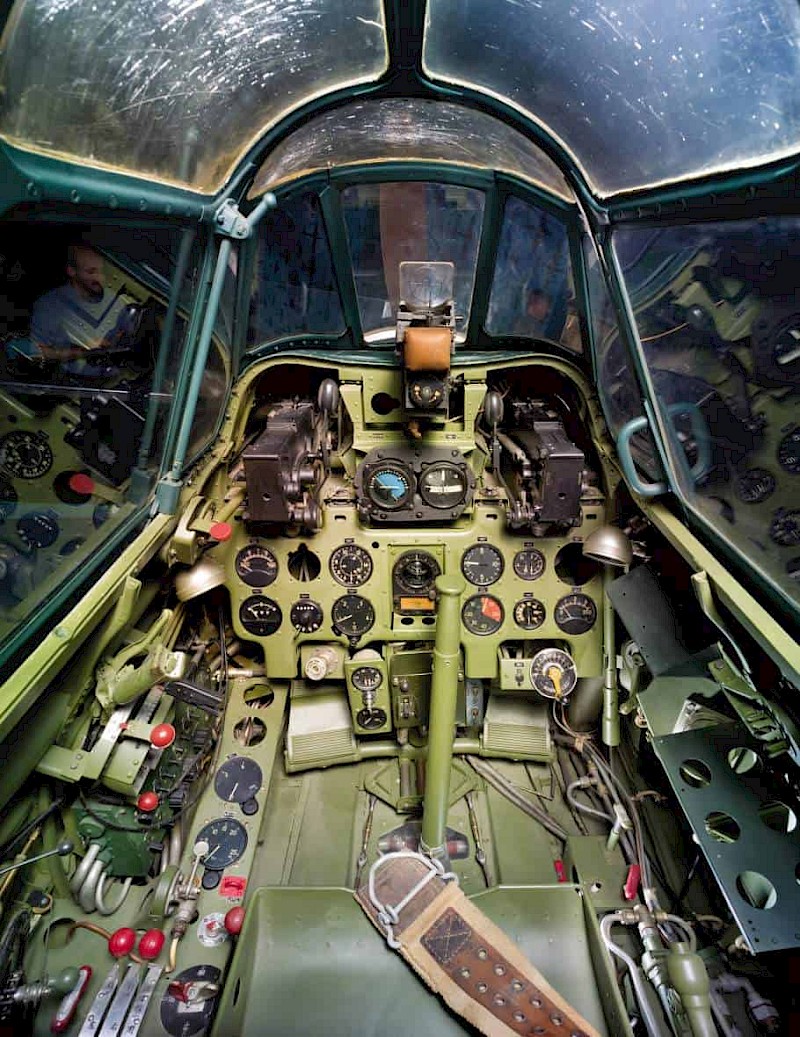
The Rise and Fall of the Japanese Zero: An introduction to how the Zero became the most famous symbol of Japanese air power during World War II
You may also like...
